
a
GAO
United States Government Accountability Office
Report to Congressional Committees
January 2006
INTERNET ACCESS
TAX MORATORIUM
Revenue Impacts Will
Vary by State
GAO-06-273

What GAO Found
United States Government Accountability Office
Why GAO Did This Study
Highlights
Accountability Integrity Reliability
Januar
y
2006
INTERNET ACCESS TAX MORATORIUM
Revenue Impacts Will Vary by State
Highlights of
GAO-06-273, a report to
congressional committees
According to one report, at the end
of 2004, some 70 million U.S. adults
logged on to access the Internet
during a typical day. As public use
of the Internet grew from the mid-
1990s onward, Internet access
became a potential target for state
and local taxation.
In 1998, Congress imposed a
moratorium temporarily preventing
state and local governments from
imposing new taxes on Internet
access. Existing state and local
taxes were grandfathered. In
amending the moratorium in 2004,
Congress required GAO to study its
impact on state and local
government revenues. This
report’s objectives are to determine
the scope of the moratorium and its
impact, if any, on state and local
revenues.
For this report, GAO reviewed the
moratorium’s language, its
legislative history, and associated
legal issues; examined studies of
revenue impact; interviewed people
knowledgeable about access
services; and collected information
about eight case study states not
intended to be representative of
other states. GAO chose the states
considering such factors as
whether they had taxes
grandfathered for different forms
of access services and covered
different urban and rural parts of
the country.
What GAO Recommends
GAO is not making any
recommendations in this report.
The Internet tax moratorium bars taxes on Internet access services provided
to end users. GAO’s interpretation of the law is that the bar on taxes
includes whatever an access provider reasonably bundles to consumers,
including e-mail and digital subscriber line (DSL) services. The moratorium
does not bar taxes on acquired services, such as high-speed communications
capacity over fiber, acquired by Internet service providers (ISP) and used to
deliver Internet access. However, some states and providers have construed
the moratorium as barring taxation of acquired services. Some officials told
us their states would stop collecting such taxes as early as November 1,
2005, the date they assumed that taxes on acquired services would lose their
grandfathered protection. According to GAO’s reading of the law, these
taxes are not barred since a tax on acquired services is not a tax on Internet
access. In comments, telecommunications industry officials continued to
view acquired services as subject to the moratorium and exempt from
taxation. As noted above, GAO disagrees. In addition, Federation of Tax
Administrators officials expressed concern that some might have a broader
view of what could be included in Internet access bundles. However, GAO’s
view is that what is included must be reasonably related to providing
Internet access.
The revenue impact of eliminating grandfathering in states studied by the
Congressional Budget Office (CBO) would be small, but the moratorium’s
total revenue impact has been unclear and any future impact would vary by
state. In 2003, when CBO reported how much states and localities would
lose annually by 2007 if certain grandfathered taxes were eliminated, its
estimate for states with grandfathered taxes in 1998 was about 0.1 percent of
those states’ 2004 tax revenues. Because it is hard to know what states
would have done to tax access services if no moratorium had existed, the
total revenue implications of the moratorium are unclear. In general, any
future moratorium-related impact will differ by state. Tax law details and
tax rates varied among states. For instance, North Dakota taxed access
service delivered to retail consumers, and Kansas taxed communications
services acquired by ISPs to support their customers.
Simplified Model of Tax Status of Services Related to Internet Access
Source: GAO and PhotoDisc (images).
Sell acquired
services to ISP
Sells bundled
access services
to end user
End user
ISP
Providers of
acquired services
Tax exempt
Subject
to taxation
a
a
Depends on state law.
www.gao.gov/cgi-bin/getrpt?GAO-06-273.
To view the full product, including the scope
and methodology, click on the link above.
For more information, contact James R. White
at (202) 512-9110 or [email protected].
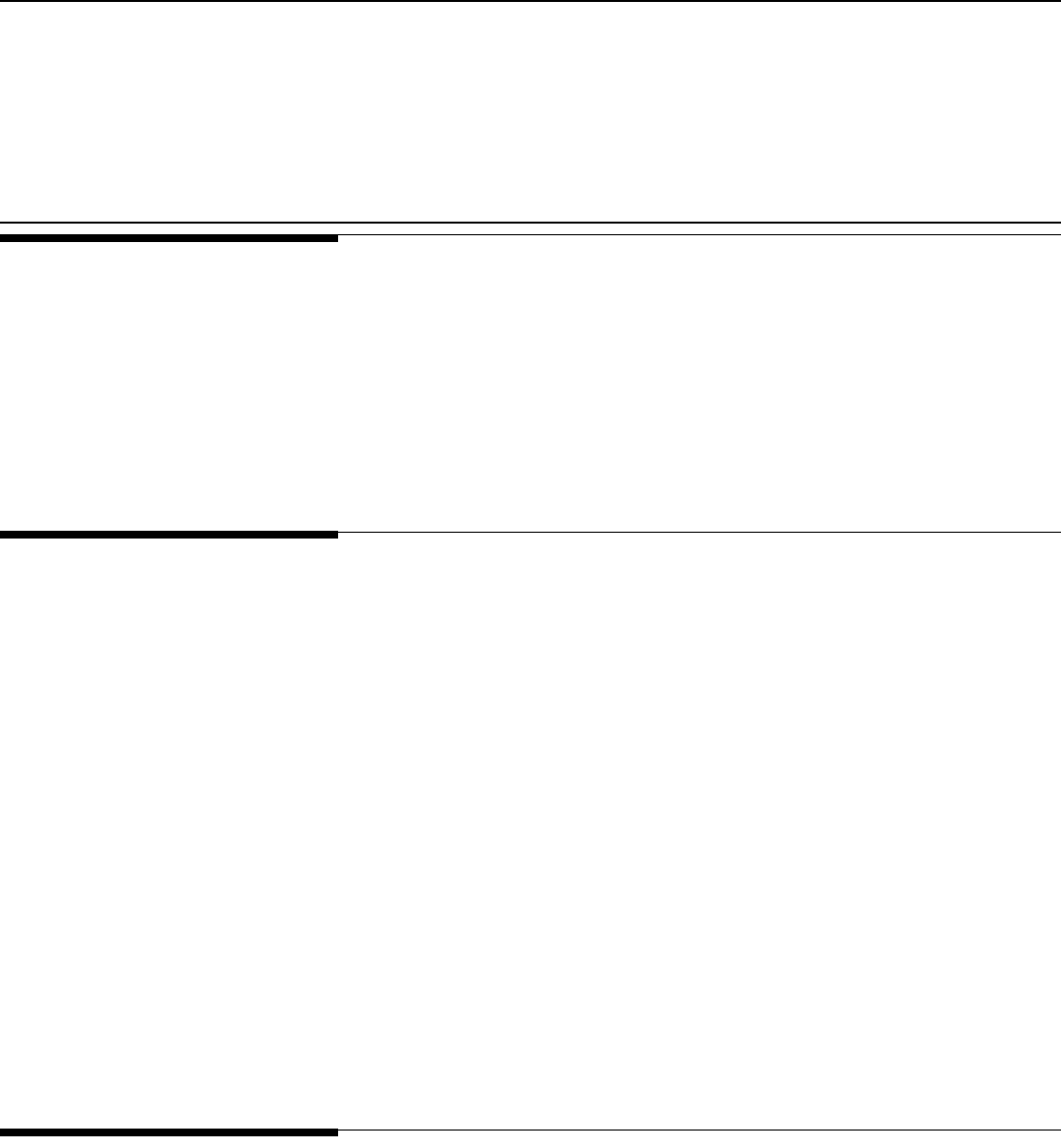
Page i GAO-06-273 Internet Access Tax Moratorium
Contents
Letter 1
Results in Brief 3
Background 4
Objectives, Scope, and Methodology 7
Internet Access Services, Including Bundled Access Services, May
Not Be Taxed, but Acquired Services May Be 8
While the Revenue Impact of Eliminating Grandfathering Would Be
Small, the Moratorium’s Total Revenue Impact Has Been Unclear
and Any Future Impact Would Vary by State 13
External Comments 20
Appendixes
Appendix I: Bundled Access Services May Not Be Taxed, but Acquired
Services Are Taxable 23
Bundled Services, Including Broadband Services, May Not Be
Taxed 23
Acquired Services May Be Taxed 24
Appendix II: CBO’s Methodology for Estimating Costs Relating to Taxing
Internet Access Services 28
Appendix III: Case Study States’ Taxation of Services Related to Internet
Access 30
California 31
Kansas 31
Mississippi 31
North Dakota 32
Ohio 32
Rhode Island 33
Texas 34
Virginia 35
Appendix IV: Comments from Telecommunications Industry Officials 36
Appendix V: GAO Contact and Staff Acknowledgments 50
Tables
Table 1: Summary of Case Study State Rough Estimates of 2004 Tax
Revenue from Acquired Services 12
Table 2: Case Study State Officials’ Rough Estimates of Taxes
Collected for 2004 Related to Internet Access 15
Table 3: Characteristics Showing Variations among Case Study
States 19

Contents
Page ii GAO-06-273 Internet Access Tax Moratorium
Table 4: Characteristics of Case Study States 30
Figures
Figure 1: Hypothetical Internet Backbone Networks with
Connections to End Users 5
Figure 2: Simplified Illustration of Services Purchased by
Consumers 9
Figure 3: Simplified Model of Tax Status of Services Related to
Internet Access 11
Abbreviations
AOL America Online
CBO Congressional Budget Office
DSL digital subscriber line
FTA Federation of Tax Administrators
ISP Internet service provider
POP point of presence
POTS plain old telephone service
VoIP Voice over Internet Protocol
This is a work of the U.S. government and is not subject to copyright protection in the
United States. It may be reproduced and distributed in its entirety without further
permission from GAO. However, because this work may contain copyrighted images or
other material, permission from the copyright holder may be necessary if you wish to
reproduce this material separately.

Page 1 GAO-06-273 Internet Access Tax Moratorium
United States Government Accountability Office
Washington, D.C. 20548
Page 1 GAO-06-273 Internet Access Tax Moratorium
A
January 23, 2006 Letter
The Honorable Ted Stevens
Chairman
The Honorable Daniel K. Inouye
Co-Chairman
Committee on Commerce, Science and Transportation
United States Senate
The Honorable Joe Barton
Chairman
The Honorable John D. Dingell
Ranking Minority Member
Committee on Energy and Commerce
House of Representatives
According to one study, at the end of 2004 some 70 million U.S. adults
logged on to the Internet during a typical day.
1
As Internet usage grew from
the mid-1990s onward, state and local governments imposed some taxes on
it and considered more. Concerned about the impact of such taxes,
Congress extensively debated whether state and local governments should
be allowed to tax Internet access. The debate resulted in legislation setting
national policy on state and local taxation of access.
In 1998, Congress enacted the Internet Tax Freedom Act,
2
which imposed a
moratorium temporarily preventing state and local governments from
imposing new taxes on Internet access or multiple or discriminatory taxes
on electronic commerce. Existing state and local taxes were
“grandfathered,” allowing them to continue to be collected. Since its
enactment, the moratorium has been amended twice, most recently in
2004, when Congress included language requiring that we study the impact
of the moratorium on state and local government revenues and on the
deployment and adoption of broadband technologies.
3
Such technologies
permit communications over high-speed, high-capacity media, such as that
1
Pew Research Center, Trends 2005 (Washington, D.C.: Jan. 25, 2005).
2
Pub. L. 105-277, 112 Stat. 2681-719 (1998), 47 U.S.C. § 151 Note.
3
Internet Tax Nondiscrimination Act, Pub. L. 108-435, § 7, 118 Stat. 2615, 2618 (2004).

Page 2 GAO-06-273 Internet Access Tax Moratorium
provided by cable modem service or by a telephone technology known as
digital subscriber line (DSL).
4
This report focuses on the moratorium’s impact on state and local
government revenues. Its objectives are to determine (1) the scope of the
moratorium and (2) the impact of the moratorium, if any, on state and local
revenues. In determining any impact on revenues, the report explores what
would happen if grandfathering of access taxes on dial-up and DSL services
were eliminated, what might have happened in the absence of the
moratorium, and how the impact of the moratorium might differ from state
to state. This report does not focus on taxing the sale of items over the
Internet. A future report will discuss the impact that various factors,
including taxes, have on broadband deployment and adoption.
To prepare this report, we reviewed the language of the moratorium, its
legislative history, and associated legal issues; examined studies of revenue
impact done by the Congressional Budget Office (CBO) and others;
interviewed representatives of companies and associations involved with
Internet access services; and collected information through case studies of
eight states. We chose the states to get a mixture of those that did or did
not have taxes grandfathered for different forms of access services, did or
did not have local jurisdictions that taxed access services, had high and low
state tax revenue dollars per household and business entity with Internet
presence, had high and low percentages of households online, and covered
different urban and rural parts of the country. We did not intend the eight
states to represent any other states. In the course of our case studies, state
officials told us how they made the estimates they gave us of tax revenues
collected related to Internet access and how firm these estimates were. We
could not verify the estimates, and, in doing its study, CBO supplemented
estimates that it received from states with CBO-generated information.
Nevertheless, based on other information we obtained, the state estimates
we received appeared to provide a sense of the order of magnitude of the
dollars involved. We did our work from February through December 2005
in accordance with generally accepted government auditing standards. A
later section of this report contains a complete discussion of our
objectives, scope, and methodology.
4
DSL is a high-speed way of accessing the Internet using traditional telephone lines that
have been “conditioned” to handle DSL technology.

Page 3 GAO-06-273 Internet Access Tax Moratorium
Results in Brief
The Internet tax moratorium bars taxes on Internet access, meaning taxes
on the service of providing Internet access. In this way, it prevents services
that are reasonably bundled as part of an Internet access package, such as
electronic mail and instant messaging, from being subject to taxes when
sold to end users. These tax-exempt services also include DSL services
bundled as part of an Internet access package. Some states and providers
have construed the moratorium as also barring taxation of what we call
acquired services, such as high-speed communications capacity over fiber,
acquired by Internet service providers and used by them to deliver access
to the Internet to their customers. Because they believed that taxes on
acquired services are prohibited by the 2004 amendments, some state
officials told us their states would stop collecting them as early as
November 1, 2005, the date they assumed that taxes on acquired services
would lose their grandfathered protection. However, according to our
reading of the law, the moratorium does not apply to acquired services
since, among other things, a tax on acquired services is not a tax on
“Internet access.” Nontaxable “Internet access” is defined in the law as the
service of providing Internet access to an end user; it does not extend to a
provider’s acquisition of capacity to provide such service. Purchases of
acquired services are subject to taxation, depending on state law.
The revenue impact of eliminating grandfathering in states studied by CBO
would be small, but the moratorium’s total revenue impact has been
unclear and any future impact would vary by state. In 2003, CBO reported
that states and localities would lose from more than $160 million to more
than $200 million annually by 2008 if all grandfathered taxes on dial-up and
DSL services were eliminated, although part of this loss reflected acquired
services. It also identified other potential revenue losses, although
unquantified, that could have grown in the future but that now seem to
pose less of a threat. CBO’s estimated annual losses by 2007 for states that
had grandfathered taxes in 1998 were about 0.1 percent of the total 2004
tax revenues for those states. Because it is difficult to know what states
would have done to tax Internet access services if no moratorium had
existed, the total revenue implications of the moratorium are unclear. The
1998 moratorium was considered before connections to the Internet were
as widespread as they later became, limiting the window of opportunity for
states to adopt new taxes on access services. Although some states had
already chosen not to tax access services and others stopped taxing them,
other states might have been inclined to tax access services if no
moratorium were in place. In general, any future impact related to the
moratorium will differ from state to state. The details of state tax law as

Page 4 GAO-06-273 Internet Access Tax Moratorium
well as applicable tax rates varied from one state to another. For instance,
North Dakota taxed access service delivered to retail consumers. Kansas
taxed communications services acquired by Internet service providers to
support their customers. Rhode Island taxed both access service offerings
and the acquisition of communications services. California officials said
their state did not tax these areas at all.
We are not making any recommendations in this report.
In oral comments on a draft of this report, CBO staff members said we
fairly characterized CBO information and suggested clarifications that we
have made as appropriate. Federation of Tax Administrators (FTA)
officials said that our legal conclusion was clearly stated and, if adopted,
would be helpful in clarifying which Internet access-related services are
taxable and which are not. However, they expressed concern that the
statute could be interpreted differently regarding what might be reasonably
bundled in providing Internet access to consumers. A broader view of
what could be included in Internet access bundles would result in potential
revenue losses much greater than we indicated. However, as explained in
appendix I, we believe that what is bundled must be reasonably related to
accessing and using the Internet. In written comments, which are reprinted
in appendix IV, company representatives commented that the 2004
amendments make acquired services subject to the moratorium and
therefore not taxable, and that the language of the statute and the
legislative history support this position. While we acknowledge that there
are different views about the scope of the moratorium, our view is based on
the language and structure of the statute.
Background
As shown in figure 1, residential and small business users often connect to
an Internet service provider (ISP) to access the Internet. Well-known ISPs
include America Online (AOL) and Comcast. Typically, ISPs market a
package of services that provide homes and businesses with a pathway, or
“on-ramp,” to the Internet along with services such as e-mail and instant
messaging. The ISP sends the user’s Internet traffic forward to a backbone
network where the traffic can be connected to other backbone networks
and carried over long distances. By contrast, large businesses often
maintain their own internal networks and may buy capacity from access
providers that connect their networks directly to an Internet backbone
network. We are using the term access providers to include ISPs as well as
providers who sell access to large businesses and other users. Nonlocal
traffic from both large businesses and ISPs connects to a backbone

Page 5 GAO-06-273 Internet Access Tax Moratorium
provider’s network at a “point of presence” (POP). Figure 1 depicts two
hypothetical and simplified Internet backbone networks that link at
interconnection points and take traffic to and from residential units
through ISPs and directly from large business users.
Figure 1: Hypothetical Internet Backbone Networks with Connections to End Users
As public use of the Internet grew from the mid-1990s onward, Internet
access and electronic commerce became potential targets for state and
local taxation. Ideas for taxation ranged from those that merely extended
existing sales or gross receipts taxes to so-called “bit taxes,” which would
measure Internet usage and tax in proportion to use. Some state and local
governments raised additional tax revenues and applied existing taxes to
POP
POP
POP
POP
POP
New York
Denver
Seattle
Backbone A
Backbone B
Point of presence
Point of interconnection
Dallas
Atlanta
Los Angeles
Large business
and institutional
users
Large business
and institutional
users
Residential, small
business, and other
users
ISP
ISP
Large business
and institutional
users
Residential, small
business, and other
users
Chicago
San
Francisco
Source: GAO and PhotoDisc (images).

Page 6 GAO-06-273 Internet Access Tax Moratorium
Internet transactions. Owing to the Internet’s inherently interstate nature
and to issues related to taxing Internet-related activities, concern arose in
Congress as to what impact state and local taxation might have on the
Internet’s growth, and thus, on electronic commerce. Congress addressed
this concern when, in 1998, it adopted the Internet Tax Freedom Act, which
bars state and local taxes on Internet access, as well as multiple or
discriminatory taxes on electronic commerce.
5
Internet usage grew rapidly in the years following 1998, and the technology
to access the Internet changed markedly. Today a significant portion of
users, including home users, access the Internet over broadband
communications services using cable modem, DSL, or wireless
technologies. Fewer and fewer users rely on dial-up connections through
which they connect to their ISP by dialing a telephone number. By 2004,
some state tax authorities were taxing DSL service, which they considered
to be a telecommunications service, creating a distinction between DSL
and services offered through other technologies, such as cable modem, that
were not taxed.
Originally designed to postpone the addition of any new taxes while the
Advisory Commission on Electronic Commerce studied the tax issue and
reported to Congress, the moratorium was extended in 2001 for 2 years
6
and again in 2004, retroactively, to remain in force until November 1, 2007.
7
The 2001 extension made no other changes to the original act, but the 2004
act included clarifying amendments. The 2004 act amended language that
had exempted telecommunications services from the moratorium.
5
A tax is a multiple tax if credit is not given for comparable taxes paid to other states on the
same transaction; a tax is a discriminatory tax if e-commerce transactions are taxed at a
higher rate than comparable nonelectronic transactions would be taxed, or are required to
be collected by different parties or under other terms that are more disadvantageous than
those that are applied in taxing other types of comparable transactions. Generally, states
and localities that tax e-commerce impose comparable taxes on nonelectronic transactions.
States that have sought at one time to require that access providers collect taxes due—a
process that might been thought to have been discriminatory—have backed away from that
position. Moreover, although interstate commerce may bear its fair share of state taxes, the
interstate commerce clause of the Constitution requires there to be a substantial nexus, fair
apportionment, nondiscrimination, and a relationship between a tax and state-provided
services that largely constrains the states in imposing such taxes. Quill Corp. v. North
Dakota, 504 U.S. 298, 313 (1992). In any case, our report does not focus on taxing the sale of
items over the Internet.
6
Internet Tax Nondiscrimination Act, 2001, Pub. L. 107-75, § 2, 115 Stat. 703.
7
Internet Tax Nondiscrimination Act, 2004, Pub. L. 108-435, §§ 2 to 6A, 118 Stat. 2615 to 2618.

Page 7 GAO-06-273 Internet Access Tax Moratorium
Recognizing state and local concerns about their ability to tax voice
services provided over the Internet, it also contained language allowing
taxation of telephone service using Voice over Internet Protocol (VoIP).
Although the 2004 amendments extended grandfathered protection
generally to November 2007, grandfathering extended only to November
2005 for taxes subject to the new moratorium but not to the original
moratorium.
Objectives, Scope, and
Methodology
To determine the scope of the Internet tax moratorium, we reviewed the
language of the moratorium, the legislative history of the 1998 act and the
2004 amendments, and associated legal issues.
To determine the impact of the moratorium on state and local revenues, we
worked in stages. First, we reviewed studies of revenue impact done by
CBO, FTA, and the staff of the Multistate Tax Commission and discussed
relevant issues with federal representatives, state and local government
and industry associations, and companies providing Internet access
services. Then, we used structured interviews to do case studies in eight
states that we chose as described earlier. We did not intend the eight states
to represent any other states.
For each selected state, we focused on specific aspects of its tax system by
using our structured interview and collecting relevant documentation. For
instance, we reviewed the types and structures of Internet access service
taxes, the revenues collected from those taxes, officials’ views of the
significance of the moratorium to their government’s financial situation,
and their opinions of any implications to their states of the new definition
of Internet access. We also learned whether localities within the states
were taxing access services. When issues arose, we contacted other states
and localities to increase our understanding of these issues.
We discussed with state officials how they derived the estimates they gave
us of tax dollars collected and how firm these numbers were. We could not
verify the estimates, and CBO supplemented estimates that it received from
states. Nevertheless, based on other information we obtained, the state
estimates appeared to provide a sense of the order of magnitude of the
numbers compared to state tax revenues.
We did our work from February through December 2005 in accordance
with generally accepted government auditing standards.
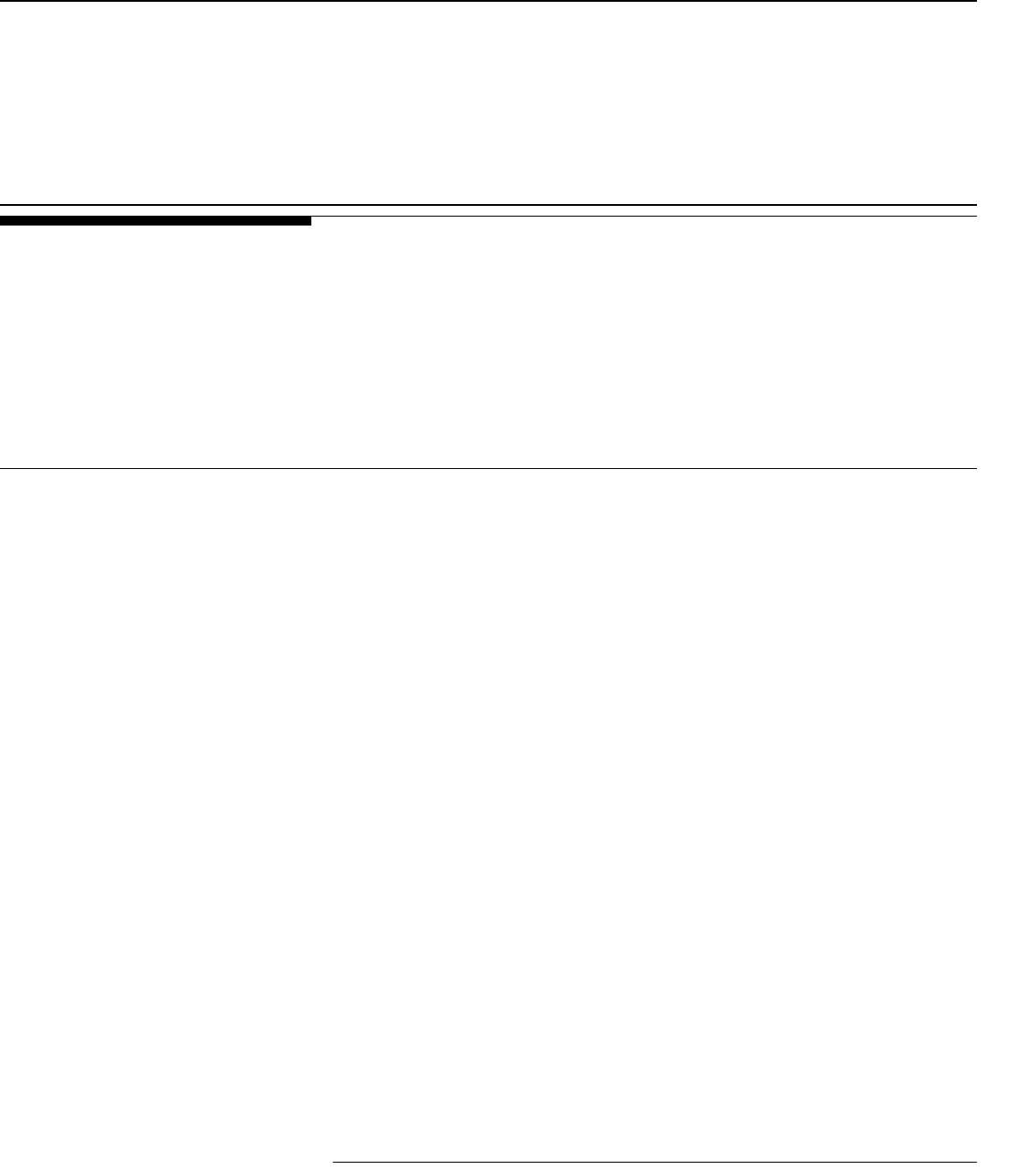
Page 8 GAO-06-273 Internet Access Tax Moratorium
Internet Access
Services, Including
Bundled Access
Services, May Not Be
Taxed, but Acquired
Services May Be
The moratorium bars taxes on the service of providing access, which
includes whatever an access provider reasonably bundles in its access
offering to consumers. On the other hand, the moratorium does not
prohibit taxes on acquired services, referring to goods and services that an
access provider acquires to enable it to bundle and provide its access
package to its customers. However, some providers and state officials have
expressed a different view, believing the moratorium barred taxing
acquired services in addition to bundled access services.
Internet Access Services,
Including Bundled
Broadband Services, May
Not Be Taxed
Since its 1998 origin, the moratorium has always prohibited taxing the
service of providing Internet access, including component services that an
access provider reasonably bundles in its access offering to consumers.
However, as amended in 2004, the definition of Internet access contains
additional words. With words added in 2004 in italics, it now defines the
scope of nontaxable Internet access as
“a service that enables users to access content, information, electronic mail, or other
services offered over the Internet, and may also include access to proprietary content,
information, and other services as part of a package of services offered to users. The term
‘Internet access’ does not include telecommunications services, except to the extent such
services are purchased, used, or sold by a provider of Internet access to provide Internet
access.”
8
(italics provided)
As shown in the simplified illustration in figure 2, the items reasonably
bundled in a tax-exempt Internet access package may include e-mail,
instant messaging, and Internet access itself. Internet access, in turn,
includes broadband services, such as cable modem and DSL services,
which provide continuous, high-speed access without tying up wireline
telephone service. As figure 2 also illustrates, a tax-exempt bundle does
not include video, traditional wireline telephone service referred to as
“plain old telephone service” (POTS), or VoIP. These services are subject to
tax. For simplicity, the figure shows a number of services transmitted over
one communications line. In reality, a line to a consumer may support just
one service at a time, as is typically the case for POTS, or it may
simultaneously support a variety of services, such as television, Internet
access, and VoIP.
8
47 U.S.C. § 151 Note § 1105(5).
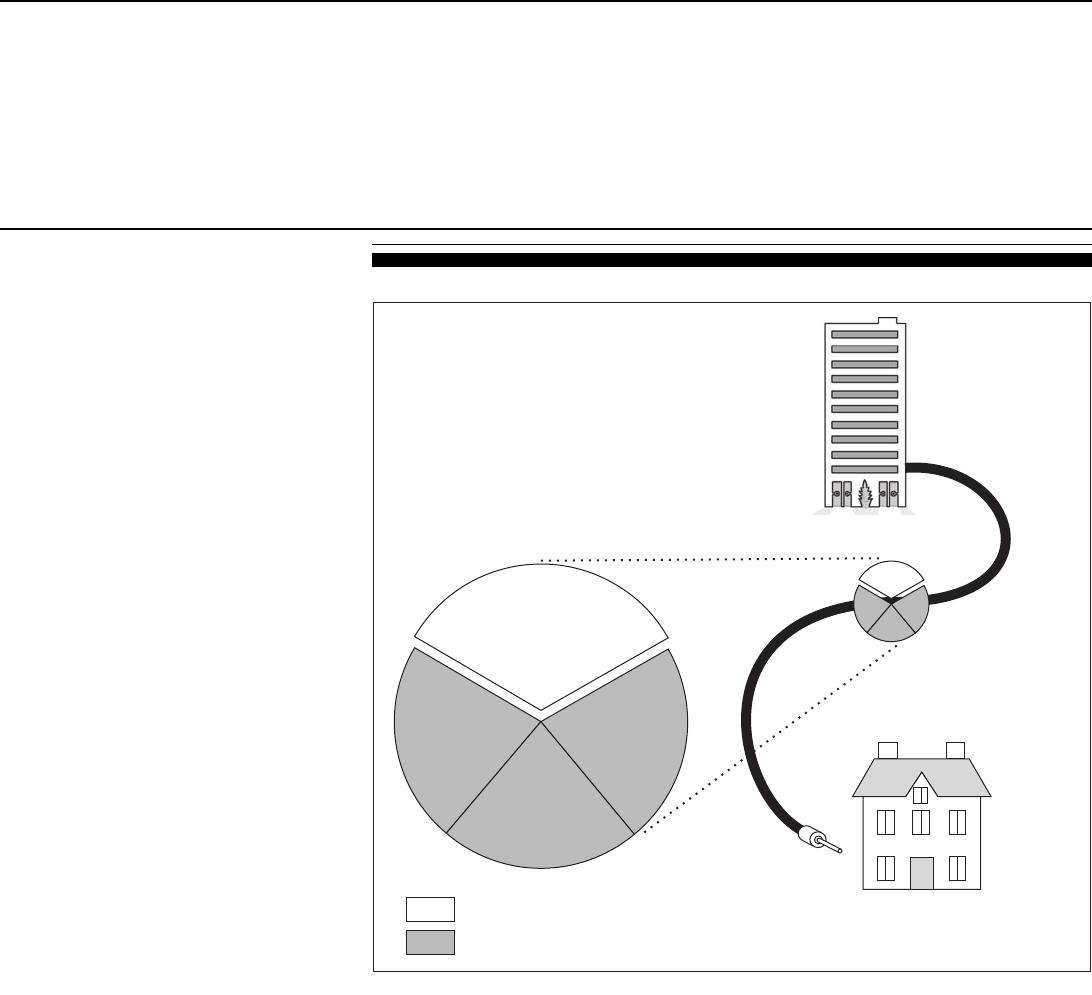
Page 9 GAO-06-273 Internet Access Tax Moratorium
Figure 2: Simplified Illustration of Services Purchased by Consumers
a
Traditional wireline telephone service, commonly referred to in the communications industry as “plain
old telephone service” (POTS).
b
May become taxable if not capable of being broken out from other services on a bill.
Our reading of the 1998 law and the relevant legislative history indicates
that Congress had intended to bar taxes on services bundled with access.
However, there were different interpretations about whether DSL service
could be taxed under existing law, and some states taxed DSL. The 2004
amendment was aimed at making sure that DSL service bundled with
access could not be taxed. See appendix I for further explanation.
Source: GAO and PhotoDisc (images).
Home, business, or
other user
Tax-exempt
b
Subject to taxation
Providers including
telephone, cable,
and wireless
companies
Internet access
package
(may include e-mail, Internet
access, and instant
messaging)
Video
POTS
a
VoIP

Page 10 GAO-06-273 Internet Access Tax Moratorium
Acquired Services May Be
Taxed
Figure 3 shows how the nature and tax status of the Internet access
services just described differ from the nature and tax status of services that
an ISP acquires and uses to deliver access to its customers. An ISP in the
middle of figure 3 acquires communications and other services and
incidental supplies (shown on the left side of the figure) in order to deliver
access services to customers (shown on the right side of the figure). We
refer to the acquisitions on the left side as purchases of “acquired
services.”
9
For example, acquired services include ISP leases of high-speed
communications capacity over wire, cable, or fiber to carry traffic from
customers to the Internet backbone.
9
Some have also used the term wholesale to describe acquired services. For example, the
New Millennium Research Council in Taxing High-Speed Services (Washington, D.C.,
Apr. 26, 2004) said that “wholesale services that telecommunications firms provide ISPs can
include local connections to the customer’s premise, high-capacity transport between
network points and backbone services.” We avoid using the term, however, because it
suggests a particular sales relationship (between wholesaler and retailer) that may be
limiting and misleading.
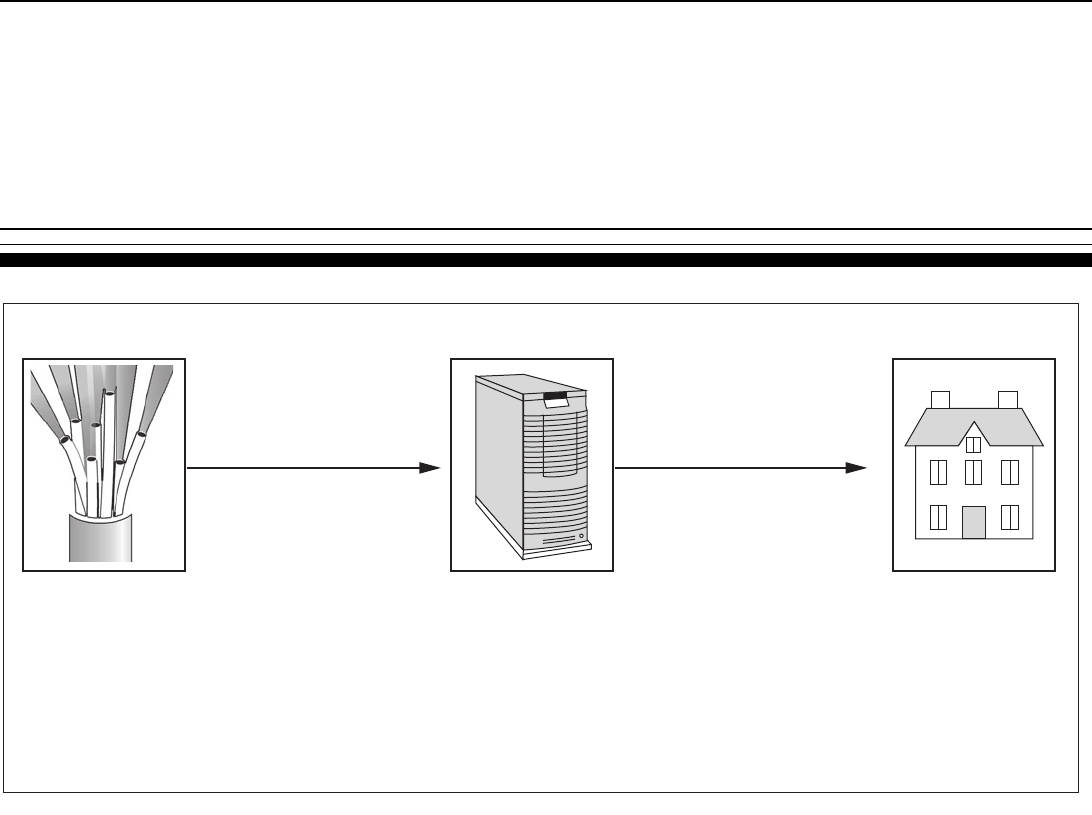
Page 11 GAO-06-273 Internet Access Tax Moratorium
Figure 3: Simplified Model of Tax Status of Services Related to Internet Access
a
“Sell acquired services” refers to selling services, either to a separate firm or to a vertically-integrated
affiliate.
b
Depends on state law.
Purchases of acquired services are subject to taxation, depending on state
law, because the moratorium does not apply to acquired services. As noted
above, the moratorium applies only to taxes imposed on “Internet access,”
which is defined in the law as “a service that enables users to access
content, information, electronic mail, or other services offered over the
Internet.…” In other words, it is the service of providing Internet access to
the end user—not the acquisition of capacity to do so—that constitutes
“Internet access” subject to the moratorium.
Some providers and state officials have construed the moratorium as
barring taxation of acquired services, reading the 2004 amendments as
making acquired services tax exempt. However, as indicated by the
language of the statute, the 2004 amendments did not expand the definition
of “Internet access,” but rather amended the exception from the definition
to allow certain “telecommunication services” to qualify for the
moratorium if they are part of the service of providing Internet access. A
Examples of services
provided:
• E-mail
• Internet access
• Instant messaging
Examples of end users:
• Home
• Business
• Government
• Education
Source: GAO and PhotoDisc
(
ima
g
es
)
.
Sell acquired
services
a
to ISP
Sells bundled
access services
to end user
End userISP
Examples of services
provided:
• Capacity over a medium
(copper wire, coaxial cable,
fiber, wireless, satellite)
• Hardware to connect to capacity
(modem or equivalent)
• Server capacity and other
capabilities to create own Web
presence (e-mail, Web site, Web
hosting, etc.)
Providers of
acquired services
Tax exempt
Subject
to taxation
b

Page 12 GAO-06-273 Internet Access Tax Moratorium
tax on acquired services is not a tax directly imposed on the service of
providing Internet access.
Our view that acquired services are not subject to the moratorium on
taxing Internet access is based on the language and structure of the statute,
as described further in appendix I. We acknowledge that others have
different views about the scope of the moratorium. Congress could, of
course, deal with this issue by amending the statute to explicitly address
the tax status of acquired services.
Some States Have Applied
the Moratorium to Acquired
Services
As noted above, some providers and state officials have construed the
moratorium as barring taxation of acquired services. Some provider
representatives said that acquired services were not taxable at the time we
contacted them and had never been taxable. Others said that acquired
services were taxable when we contacted them but would become tax
exempt in November 2005 under the 2004 amendments, the date they
assumed that taxes on acquired services would no longer be grandfathered.
As shown in table 1, officials from four out of the eight states we studied—
Kansas, Mississippi, Ohio, and Rhode Island—also said their states would
stop collecting taxes on acquired services, as of November 1, 2005, in the
case of Kansas and Ohio whose collections have actually stopped, and later
for the others. These states roughly estimated the cost of this change to
them to be a little more than $40 million in revenues that were collected in
2004. An Ohio official indicated that two components comprised most of
the dollar amounts of taxes collected from these services in 2004:
$20.5 million from taxes on telecommunications services and property
provided to ISPs and Internet backbone providers, and $9.1 million from
taxes for private line services (such as high-capacity T-1 and T-3 lines) and
800/wide-area telecommunications services that the official said would be
exempt due to the moratorium. The rough estimates in table 1 are subject
to the same limitations described in the next section for the state estimates
of all taxes collected related to Internet access.
Table 1: Summary of Case Study State Rough Estimates of 2004 Tax Revenue from Acquired Services
State
Collected taxes paid on
acquired services
2004 revenue from taxes paid on acquired services (dollars in
millions)
California $0
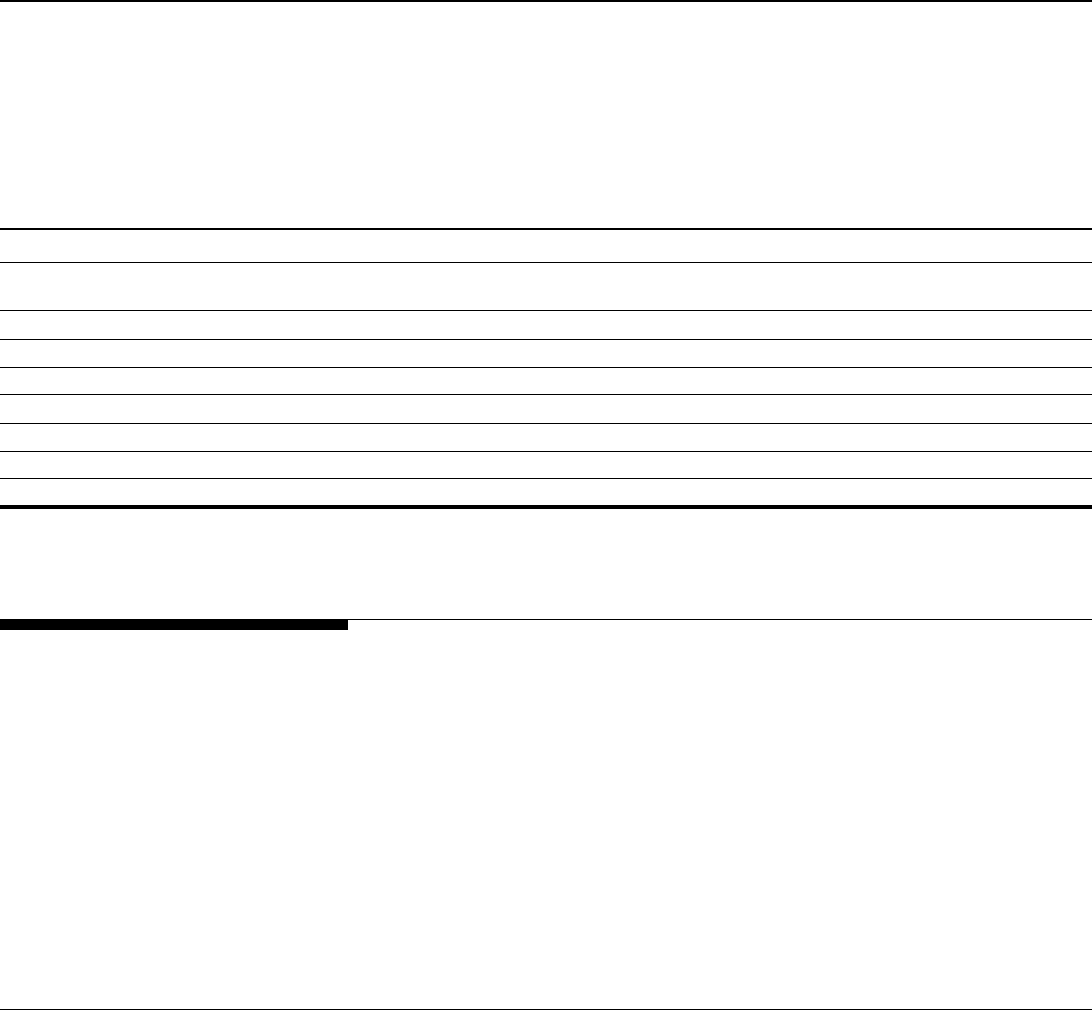
Page 13 GAO-06-273 Internet Access Tax Moratorium
Source: State officials.
Note: The next section contains a discussion of general limitations of the state estimates of revenue
from taxes.
While the Revenue
Impact of Eliminating
Grandfathering Would
Be Small, the
Moratorium’s Total
Revenue Impact Has
Been Unclear and Any
Future Impact Would
Vary by State
According to CBO data, grandfathered taxes in the states CBO studied
were a small percentage of those states’ tax revenues. However, because it
is difficult to know which states, if any, might have chosen to tax Internet
access services and what taxes they might have chosen to use if no
moratorium had ever existed, the total revenue implications of the
moratorium are unclear. In general, any future impact related to the
moratorium will differ from state to state.
According to Information in
CBO Reports, States Would
Lose a Small Fraction of
Their Tax Revenues If
Grandfathered Taxes on
Dial-up and DSL Services
Were Eliminated
In 2003, CBO reported how much state and local governments that had
grandfathered taxes on dial-up and DSL services would lose in revenues if
the grandfathering were eliminated. The fact that these estimates
represented a small fraction of state tax revenues is consistent with other
information we obtained. In addition, the enacted legislation was narrower
than what CBO reviewed, meaning that CBO’s stated concerns about VoIP
and taxing providers’ income and assets would have dissipated.
CBO provided two estimates in 2003 that, when totaled, showed that no
longer allowing grandfathered dial-up and DSL service taxes would cause
state and local governments to lose from more than $160 million to more
than $200 million annually by 2008. According to a CBO staff member, this
Kansas x 9-10
Mississippi x At most, 1
North Dakota 0
Ohio x 32.3
Rhode Island x Insignificant compared to total telecommunications tax revenues
Texas 0
Virginia 0
(Continued From Previous Page)
State
Collected taxes paid on
acquired services
2004 revenue from taxes paid on acquired services (dollars in
millions)

Page 14 GAO-06-273 Internet Access Tax Moratorium
estimate included some amounts for what we are calling acquired services
that, as discussed in the previous section, would not have to be lost. CBO
provided no estimates of revenues involved for governments not already
assessing the taxes and said it could not estimate the size of any additional
impacts on state and local revenues of the change in the definition of
Internet access. Further, according to a CBO staff member, CBO’s
estimates did not include any lost revenues from taxes on cable modem
services. In October 2003, around the time of CBO’s estimates, the number
of cable home Internet connections was 12.6 million, compared to 9.3
million home DSL connections and 38.6 million home dial-up connections.
CBO first estimated that as many as 10 states and several local
governments would lose $80 million to $120 million annually, beginning in
2007, if the 1998 grandfather clause were repealed. Its second estimate
showed that, by 2008, state and local governments would likely lose more
than $80 million per year from taxes on DSL service.
10
CBO’s estimates resulted from systematic, detailed analyses of information
from state and national sources and involved assumptions to deal with
uncertainties. In arriving at these estimates, CBO asked each state with
grandfathered taxes for information on how much it collected in taxes
related to access services. In addition, it estimated each state’s access
service-related taxes by using such data as the number of Internet users in
the state, the average fees that users paid to providers, applicable state tax
rates, expected amounts of dial-up versus broadband usage, and estimates
of possible noncompliance with tax assessments. See appendix II for
further information on the CBO methodology and associated limitations.
Rather than again doing what CBO had done and gathering information on
all 50 states, we tried to supplement what we learned from CBO by
exploring more in-depth information in case studies of eight states.
The CBO numbers are a small fraction of total state tax revenue amounts.
For example, the $80 million to $120 million estimate for the states with
originally grandfathered taxes for 2007 was about 0.1 percent of tax
revenues in those states for 2004—3 years earlier.
10
The more than $80 million per year is the amount of revenue that CBO expected state and
local governments to collect on DSL service and some acquired services by 2008. If the
jurisdictions had recognized that the reason for the 2004 amendments was largely moot, and
if they had not been collecting taxes on DSL service in the first place, they would not have
had part of the $80 million to lose.
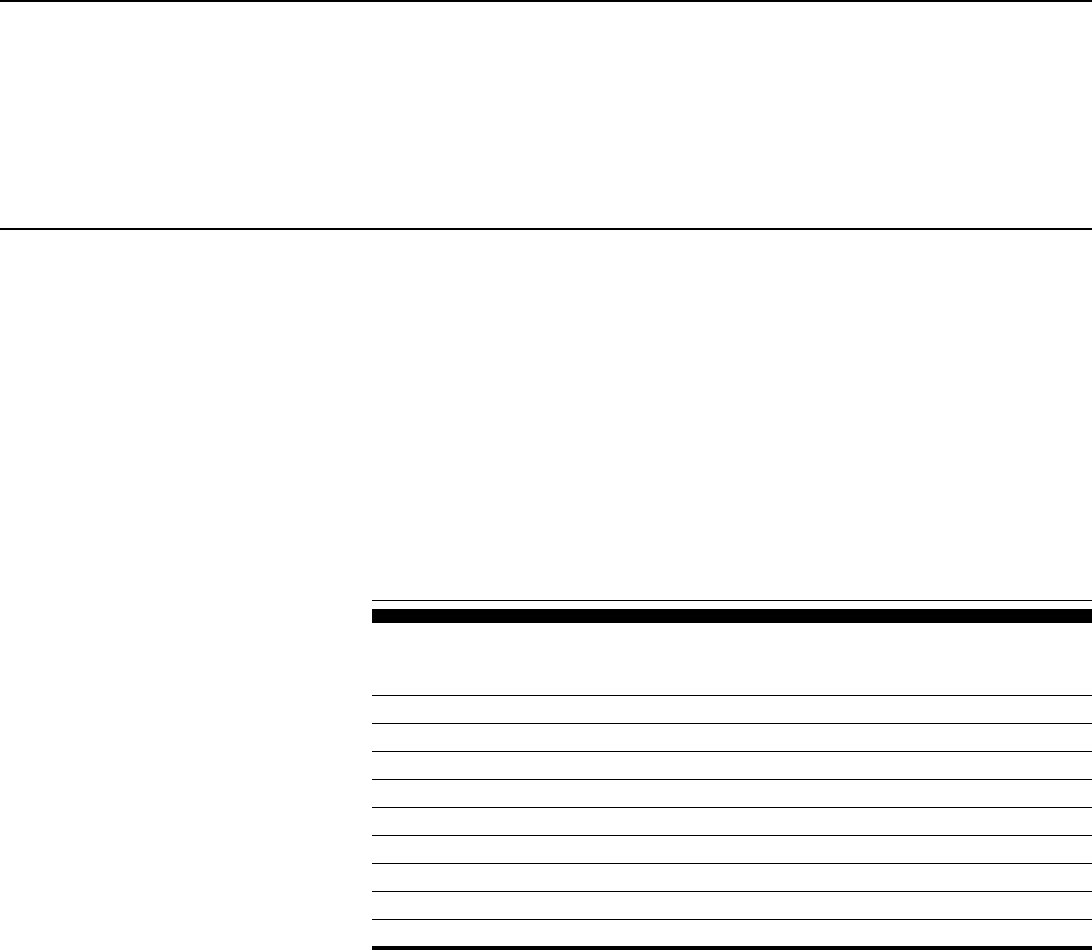
Page 15 GAO-06-273 Internet Access Tax Moratorium
The fact that CBO estimates are a small part of state tax revenues is
consistent with information we obtained from our state case studies and
interviews with providers. For instance, after telling us whether various
access-related services, including cable modem service, were subject to
taxation in their jurisdictions, the states collecting taxes gave us rough
estimates of how much access service-related tax revenues they collected
for 2004 for themselves and their localities, if applicable. (See table 2.) All
except two collected $10 million or less. Even the largest state tax amount
reportedly collected in 2004 for Internet access revenues, excluding
collections for localities—$50 million in Texas—was only about one-sixth
of 1 percent of the state’s tax revenues for that year; the largest percentage
for any of our case study states was about 0.2 percent.
Table 2: Case Study State Officials’ Rough Estimates of Taxes Collected for 2004
Related to Internet Access
Source: State officials.
Note: The accompanying text contains a discussion of general limitations of the state estimates of
revenue from taxes.
a
According to a Mississippi official, although estimating a dollar amount would be extremely hard, the
state believes the amount collected was at most $1 million.
b
Rhode Island officials told us that taxes collected on access were taxes paid on services to retail
consumers, and Rhode Island did not have an estimate for taxes collected on acquired services.
c
Texas officials did not provide us with an estimate of taxes collected for Texas localities.
The states made their estimates by assuming, for instance, that access
service-related tax revenues were a certain percentage of state
telecommunications sales tax revenues, by reviewing providers’ returns, or
by making various calculations starting with census data. Most estimates
provided us were more ballpark approximations than precise
computations, and CBO staff expressed a healthy skepticism toward some
state estimates they received. They said that the supplemental state-by-
State Estimated taxes collected (dollars in millions)
California N/A
Kansas $9-10
Mississippi At most, 1
a
North Dakota 2.4
Ohio 52.1
Rhode Island Less than 4.5
b
Texas 50
c
Virginia N/A

Page 16 GAO-06-273 Internet Access Tax Moratorium
state information they developed sometimes produced lower estimates
than the states provided. According to others knowledgeable in the area,
estimates provided us were imprecise because when companies filed sales
or gross receipts tax returns with states, they did not have to specifically
identify the amount of taxes they received from providing Internet access-
related services to retail consumers or to other providers. As discussed
earlier, sales to other providers remain subject to taxation, depending on
state law. Some providers told us they did not keep records in such a way
as to be able to readily provide that kind of information. Also, although
states reviewed tax compliance by auditing taxpayers, they could not audit
all providers.
The dollar amounts in table 2 include amounts, where provided, for local
governments within the states. For instance, Kansas’s total includes about
$2 million for localities and North Dakota’s about $400,000 for localities. In
these states as well as in others we studied, local jurisdictions were
piggybacking on the state taxes, although the local tax rates could differ
from each other. For example, according to a state official, in Kansas the
state tax was 5.3 percent, and the state collected an average of another 1.3
percent for local jurisdictions. While we did encounter localities outside
our case study states that taxed access services under their own authority,
almost all the collections for local jurisdictions that we came across were
amounts collected by the states that were sent back to the localities.
State tax officials from our case study states who commented to us on the
impacts of the revenue amounts did not consider them significant.
Similarly, state officials voiced concerns but did not cite nondollar specifics
when describing any possible impact on their state finances arising from no
longer taxing Internet access services. However, one noted that taking
away Internet access as a source of revenue was another step in the
erosion of the state’s tax base.
11
Other state and local officials observed
that if taxation of Internet access were eliminated, the state or locality
would have to act somehow to continue meeting its requirement for a
balanced budget. At the local level, officials told us that a revenue decrease
would reduce the amount of road maintenance that could be done or could
adversely affect the number of employees available for providing
government services.
11
In the debate leading to the 2004 amendments’ passage, critics had expressed concern that
the federal government was interfering with state and local revenue-raising ability.

Page 17 GAO-06-273 Internet Access Tax Moratorium
Because of the provisions in the enacted 2004 law, some unquantified
revenue losses noted by CBO in its 2003 study that could have grown to be
large no longer seem to pose the threat that some feared. For example,
CBO mentioned the possibility of state and local governments being unable
to tax customers’ telephone calls over the Internet. However, as enacted,
the 2004 amendments differed from the version reviewed by CBO and
contained language excluding Internet-based telephone service, known as
VoIP, from the moratorium.
12
In addition, CBO expressed concern that providers could bundle products
containing content, such as books and movies, call the product Internet
access, and have the whole bundle be exempt from taxes. Although some
people we interviewed still feared bundled content and information might
become tax free, they and others indicated they were aware of no court
cases in which this argument has been asserted.
13
The 2004 amendments also included a provision specifically allowing states
to tax Internet providers’ net income, capital stock, net worth, or property
value, addressing another concern raised by some parties.
Timing of Moratorium Might
Have Precluded Many States
from Taxing Access
Services, with Unclear
Revenue Implications
Because it is difficult to predict what states would have done to tax
Internet access services had Congress not intervened when it did, it is hard
to estimate the amount of revenue that was not raised because of the
moratorium. For instance, at the time the first moratorium was being
considered in 1998, the Department of Commerce reported Internet
connections for less than a fifth of U.S. households, much less than the half
of U.S. households reported 6 years later. Access was typically dial-up. As
states and localities saw the level of Internet connections rising and other
technologies becoming available, they might have taxed access services if
12
In our case studies, we found that even though the 2004 amendments did not affect the
taxation of VoIP, some state and local officials were still very concerned about VoIP’s
taxability. When questioned about the impact of the moratorium on his state’s financial
situation, one official noted that the state was more concerned about what will happen with
VoIP than about the current provisions of the 2004 amendments. Some local officials we
interviewed were concerned that legislation like the 2004 amendments is a step toward
eroding their ability to tax utilities such as telephone services. City officials were
apprehensive that additional legislation will “piggyback” on the 2004 amendments, exclude
services from state taxation, and eventually define VoIP as Internet access, having a severe,
detrimental effect on revenues.
13
Also see the first footnote in appendix I.

Page 18 GAO-06-273 Internet Access Tax Moratorium
no moratorium had been in place. Taxes could have taken different forms.
For example, jurisdictions might have even adopted bit taxes based on the
volume of digital information transmitted.
The number of states collecting taxes on access services when the first
moratorium was being considered in early 1998 was relatively small, with
13 states and the District of Columbia collecting these taxes, according to
the Congressional Research Service. Five of those jurisdictions later
eliminated or chose not to enforce their tax. In addition, not all 37 other
states would have taxed access services related to the Internet even if they
could have. For example, California had already passed its own Internet
tax moratorium in August 1998.
Still, after the moratorium began, other states showed an interest in taxing
Internet access services. Although the 1998 act precluded those
jurisdictions from taxing Internet access, it included language stating that
access services did not include telecommunications services. States
seeking to take advantage of this provision taxed parts of DSL service they
considered a telecommunications service and not an Internet access
service. If taxing DSL service shows a desire to tax access services in
general, many states not taxing dial-up or cable modem service
14
might
have done so but for the moratorium.
Given that some states never taxed access services while relatively few
Internet connections existed, that some stopped taxing access services,
and that others taxed DSL service, it is unclear what jurisdictions would
have done if no moratorium had existed. However, the relatively early
initiation of a moratorium reduced the opportunity for states inclined to tax
access services to do so before Internet connections became more
widespread.
Any Future Impact of the
Moratorium Will Vary by
State
Although as previously noted the impact of eliminating grandfathering
would be small in states studied by CBO or by us, any future impact related
to the moratorium will vary on a state-by-state basis for many reasons.
State tax laws differed significantly from each other, and states and
14
Care must be taken not to confuse cable television service and cable modem service,
which is used to deliver Internet access. Cable television service providers may also
provide cable modem service. Only cable modem service is subject to the moratorium.
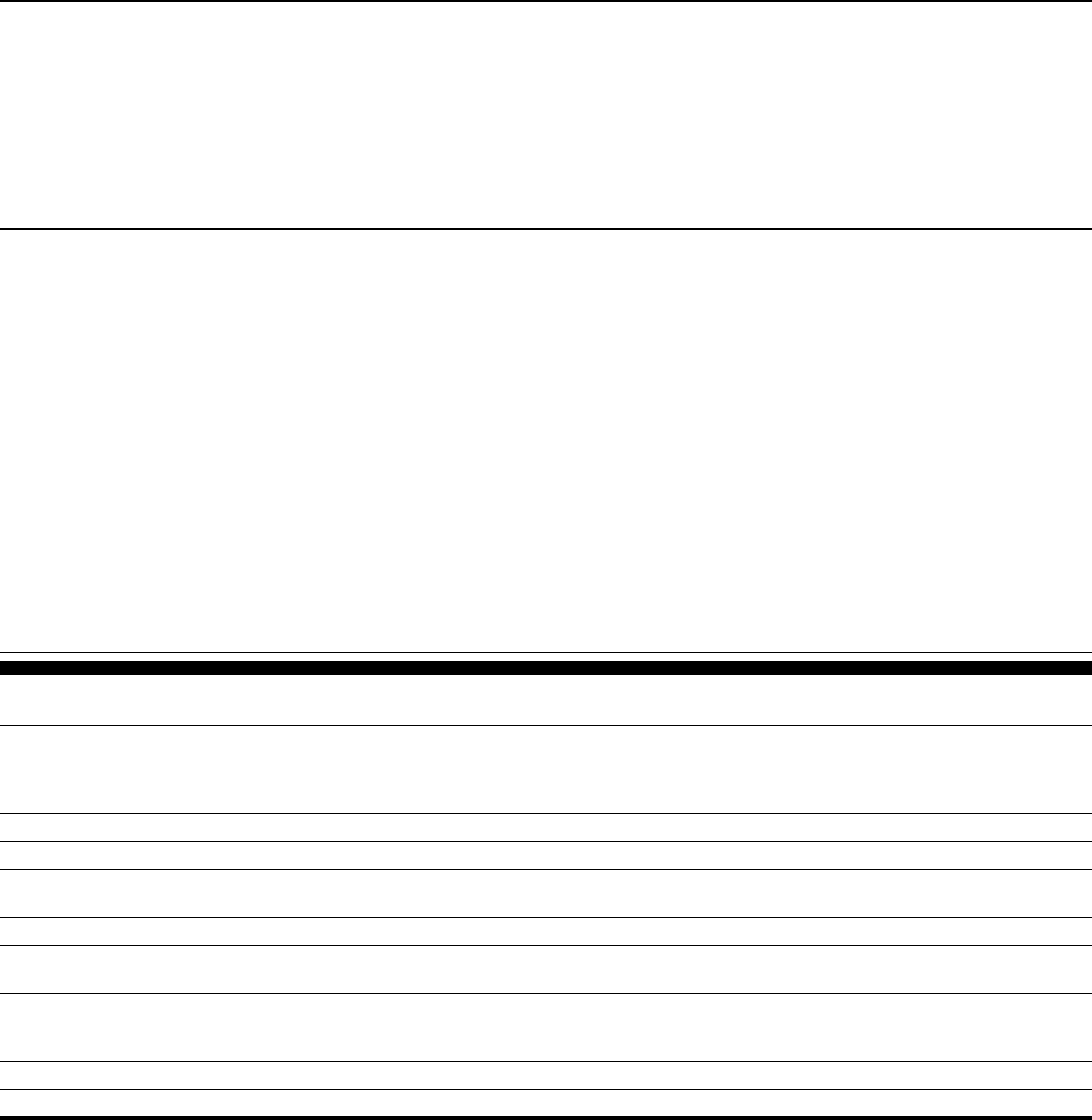
Page 19 GAO-06-273 Internet Access Tax Moratorium
providers disagreed on how state laws applied to the providers. Appendix
III summarizes information we gathered about our case study states.
As shown in table 3, states taxed Internet access using different tax
vehicles imposed on diverse tax bases at various rates. The tax used might
be generally applicable to a variety of goods and services, as in Kansas,
which did not impose a separate tax on communications services. There,
the state’s general sales tax applied to the purchase of communications
services by access providers at an average rate of 6.6 percent, combining
state and average local tax rates. As another example, North Dakota
imposed a sales tax on retail consumers’ communications services,
including Internet access services, at an average state and local combined
rate of 6 percent. Rhode Island charged a 5 percent tax on companies’
telecommunications gross receipts.
Table 3: Characteristics Showing Variations among Case Study States
Source: State officials and laws.
a
For purposes of this report, a reference to a sales tax includes any ancillary use tax. Also for our
purposes, the difference between a sales and a gross receipts tax is largely a distinction without a
difference since the moratorium does not differentiate between them.
b
Rhode Island retail consumers did not pay this tax directly, but rather through the gross receipts tax
paid by their providers.
Our case study states showed little consistency in the base they taxed in
taxing services related to Internet access. States imposed taxes on
State Type of tax
a
Taxing retail
consumer
Internet access
services
Taxing acquired
services
State tax rate
(percentage)
Local tax rate
(percentage)
Exemptions of
customer types or
payment amounts
California N/A N/A N/A
Kansas Sales x 5.3 1.3 on average
Mississippi Gross
income
x 7.0 N/A
North Dakota Sales x 5.0 1.0-2.0
Ohio Sales x x 5.5 1.0 on average Residential
consumers
Rhode Island Gross
receipts and
sales
x
b
x 5.0,
6.0
N/A
Texas Sales x 6.25 2.0 limit First $25 of services
Virginia N/A N/A N/A

Page 20 GAO-06-273 Internet Access Tax Moratorium
different transactions and populations. North Dakota and Texas taxed only
services delivered to retail consumers. In a type of transaction which, as
discussed earlier, we do not view as subject to the moratorium, Kansas and
Mississippi taxed acquired communications services purchased by access
providers. Ohio and Rhode Island taxed both the provision of access
services and acquired services, and California and Virginia officials told us
their states taxed neither. States also provided various exemptions from
their taxes. Ohio exempted residential consumers, but not businesses,
from its tax on access services, and Texas exempted the first $25 of
monthly Internet access service charges from taxation.
Some state and local officials and company representatives held different
opinions about whether certain taxes were grandfathered and about
whether the moratorium applied in various circumstances. For example,
some providers’ officials questioned whether taxes in North Dakota,
Wisconsin, and certain cities in Colorado were grandfathered, and whether
those jurisdictions were permitted to continue taxing. Providers disagreed
among themselves about how to comply with the tax law of states whose
taxes may or may not have been grandfathered. Some providers told us
they collected and remitted taxes to the states even when they were
uncertain whether these actions were necessary; however, they told us of
others that did not make payments to the taxing states in similarly
uncertain situations. In its 2003 work, CBO had said that some companies
challenged the applicability of Internet access taxes to the service they
provided and thus might not have been collecting or remitting them even
though the states believed they should.
Because of all these state-by-state differences and uncertainties, the impact
of future changes related to the moratorium would vary by state. Whether
the moratorium were lifted or made permanent and whether
grandfathering were continued or eliminated, states would be affected
differently from each other.
External Comments
We showed staff members of CBO, officials of FTA, and representatives of
telecommunications companies assembled by the United States Telecom
Association a draft of our report and asked for oral comments. On
January 5, 2006, CBO staff members, including the Chief of the State and
Local Government Unit, Cost Estimates Unit, said we fairly characterized
CBO information and suggested clarifications that we have made as
appropriate. In one case, we have noted more clearly that CBO
supplemented its dollar estimates of revenue impact with a statement that

Page 21 GAO-06-273 Internet Access Tax Moratorium
other potential revenue losses could potentially grow by an unquantified
amount.
On January 6, 2006, FTA officials, including the Executive Director, said
that our legal conclusion was clearly stated and, if adopted, would be
helpful in clarifying which Internet access-related services are taxable and
which are not. However, they expressed concern that the statute could be
interpreted differently regarding what might be reasonably bundled in
providing Internet access to consumers. A broader view of what could be
included in Internet access bundles would result in potential revenue
losses much greater than we indicated. However, as explained in appendix
I, we believe that what is bundled must be reasonably related to accessing
and using the Internet. FTA officials were also concerned that our reading
of the 1998 law regarding the taxation of DSL services is debatable and
suggests that states overreached by taxing them. We recognize that
Congress acted in 2004 to address different interpretations of the statute,
and we made some changes to clarify our presentation. We acknowledge
there were different views on this matter, and we are not attributing any
improper intent to the states’ actions.
When meeting with us, representatives of telecommunications companies
said they would like to submit comments in writing. Appearing in appendix
IV, their comments argue that the 2004 amendments make acquired
services subject to the moratorium and therefore not taxable, and that the
language of the statute and the legislative history support this position. In
response, we made some changes to simplify appendix I. That appendix,
along with the section of the report on bundled access services and
acquired services, contains an explanation of our view that the language
and structure of the statute support our interpretation.
We are sending copies of this report to interested congressional
committees and other interested parties. In addition, the report will be
available at no charge on GAO’s Web site at
http://www.gao.gov.
If you or your staffs have any questions about this report, please contact
me at (202) 512-9110 or
[email protected]. Contact points for our Offices of
Congressional Relations and Public Affairs may be found on the last page
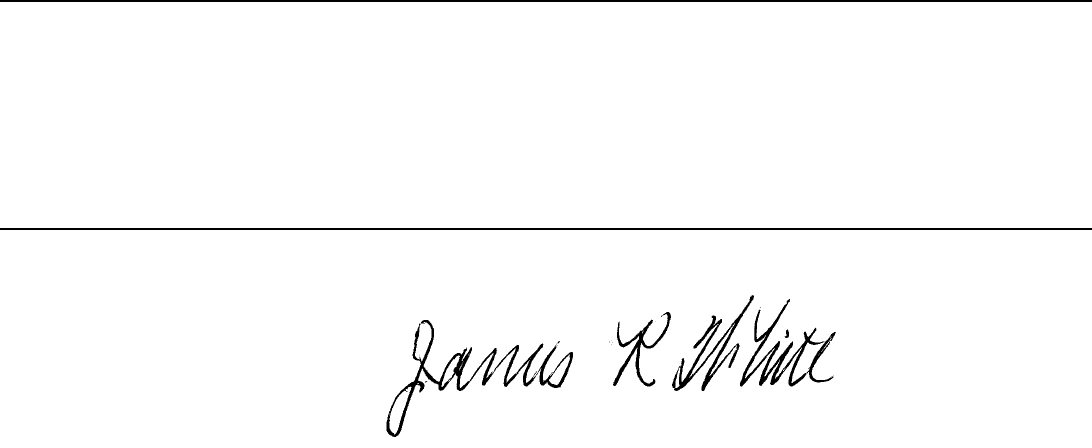
Page 22 GAO-06-273 Internet Access Tax Moratorium
of this report. GAO staff who made major contributions to this report are
listed in appendix V.
James R. White
Director, Tax Issues
Strategic Issues

Page 23 GAO-06-273 Internet Access Tax Moratorium
Appendix I
AppendixesBundled Access Services May Not Be Taxed,
but Acquired Services Are Taxable
Appendix I
The moratorium bars taxes on the service of providing access, which
includes whatever an access provider reasonably bundles in its access
offering to consumers.
1
On the other hand, the moratorium does not bar
taxes on acquired services.
Bundled Services,
Including Broadband
Services, May Not Be
Taxed
As noted earlier, the 2004 amendments followed a period of significant
growth and technological development related to the Internet. By 2004,
broadband communications technologies were becoming more widely
available. They could provide greatly enhanced access compared to the
dial-up access technologies widely used in 1998. These broadband
technologies, which include cable modem service built upon digital cable
television infrastructure as well as digital subscriber line (DSL) service,
provide continuous, high-speed Internet access without tying up wire-line
telephone service. Indeed, cable and DSL facilities could support multiple
services—television, Internet access, and telephone services—over
common coaxial cable, fiber, and copper wire media.
The Internet Tax Freedom Act bars “taxes on Internet access” and defines
“Internet access” as a service that enables “users to access content,
information, electronic mail, or other services offered over the Internet.”
The term Internet access as used in this context includes “access to
proprietary content, information, and other services as part of a package of
services offered to users.” The original act expressly excluded
“telecommunications services” from the definition.
2
As will be seen, the act
barred jurisdictions from taxing services such as e-mail and instant
messaging bundled by providers as part of their Internet access package;
however, it permitted dial-up telephone service, which was usually
provided separately, to be taxed.
1
Notwithstanding fears expressed by some during consideration of the 2004 amendments,
this does not mean that anything may be bundled and thus become tax exempt. Clearly,
what is bundled must be reasonably related to accessing and using the Internet, including
electronic services that are customarily furnished by providers. In this regard, it is
fundamental that a construction of a statute cannot be sustained that would otherwise
result in unreasonable or absurd consequences. Singer, 2A Sutherland Statutory
Construction, § 45:12 (6
th
ed., 2005).
2
The 1998 act defined Internet access as “a service that enables users to access content,
information, electronic mail, or other services offered over the Internet, and may also
include access to proprietary content, information, and other services as part of a package
of services offered to users. Such term [Internet access] does not include
telecommunications services.”

Appendix I
Bundled Access Services May Not Be Taxed,
but Acquired Services Are Taxable
Page 24 GAO-06-273 Internet Access Tax Moratorium
The original definition of Internet access, exempting “telecommunications
services,” was changed by the 2004 amendment. Parties seeking to carve
out exceptions that could be taxed had sought to break out and treat DSL
services as telecommunications services, claiming the services were
exempt from the moratorium even though they were bundled as part of an
Internet access package. State and local tax authorities began taxing DSL
service, creating a distinction between DSL and services offered using
other technologies, such as cable modem service, a competing method of
providing Internet access that was not to be taxed. The 2004 amendment
was aimed at making sure that DSL service bundled with access could not
be taxed. The amendment excluded from the telecommunications services
exemption telecommunications services that were “purchased, used, or
sold by a provider of Internet access to provide Internet access.”
The fact that the original 1998 act exempted telecommunications services
shows that other reasonably bundled services remained a part of Internet
access service and, therefore, subject to the moratorium. Thus,
communications services such as cable modem services that are not
classified as telecommunications services are included under the
moratorium.
Acquired Services May
Be Taxed
As emphasized by numerous judicial decisions, we begin the task of
construing a statute with the language of the statute itself, applying the
canon of statutory construction known as the plain meaning rule. E.g.
Hartford Underwriter Insurance Co. v. Union Planers Bank, N.A., 530
U.S. 1 (2000); Robinson v. Shell Oil Co., 519 U.S. 337 (1997). Singer, 2A
Sutherland Statutory Construction, §§
46:1, 48A:11, 15-16. Thus, under the
plain meaning rule, the primary means for Congress to express its intent is
the words it enacts into law and interpretations of the statute should rely
upon and flow from the language of the statute.
As noted above, the moratorium applies to the “taxation of Internet
access.” According to the statute, “Internet access” means a service that
enables users to access content, information, or other services over the
Internet. The definition excludes “telecommunications services” and, as
amended in 2004, limits that exclusion by exempting services “purchased,
used, or sold” by a provider of Internet access. As amended in 2004, the
statute now reads as follows:
“The term ‘Internet access’ means a service that enables users to access content,
information, electronic mail, or other services offered over the Internet….The term

Appendix I
Bundled Access Services May Not Be Taxed,
but Acquired Services Are Taxable
Page 25 GAO-06-273 Internet Access Tax Moratorium
“Internet access” does not include telecommunications services, except to the extent such
services are purchased, used, or sold by a provider of Internet access to provide internet
access.” Section 1105(5).
The language added in 2004--exempting from “telecommunications
services” those services that are “purchased, used, or sold” by a provider in
offering Internet access--has been read by some as expanding the “Internet
access” to which the tax moratorium applies, by barring taxes on “acquired
services.” Those who would read the moratorium expansively take the
view that everything acquired by Internet service providers (ISP)
(everything on the left side of figure 3) as well as everything furnished by
them (everything in the middle of figure 3) is exempt from tax.
In our view, the language and structure of the statute do not permit the
expansive reading noted above. “Internet access” was originally defined
and continues to be defined for purposes of the moratorium as the service
of providing Internet access to a user. Section 1105(5). It is this
transaction, between the Internet provider and the end user, which is
nontaxable under the terms of the moratorium.
3
The portion of the
definition that was amended in 2004 was the exception: that is,
telecommunication services are excluded from nontaxable “Internet
access,” except to the extent such services are “purchased, used, or sold by
a provider of Internet access to provide Internet access.” Thus, we
conclude that the fact that services are “purchased, used, or sold” by an
Internet provider has meaning only in determining whether these services
can still qualify for the moratorium notwithstanding that they are
“telecommunications services;” it does not mean that such services are
independently nontaxable irrespective of whether they are part of the
service an Internet provider offers to an end user. Rather, a service that is
“purchased, used, or sold” to provide Internet access is not taxable only if it
is part of providing the service of Internet access to the end user. Such
services can be part of the provision of Internet access by a provider who,
for example, “purchases” a service for the purpose of bundling it as part of
an Internet access offering; “uses” a service it owns or has acquired for that
purpose; or simply “sells” owned or acquired services as part of its Internet
access bundle.
3
As noted previously, the moratorium applies to “taxes on Internet access.” Related
provisions defining a “tax on Internet access” for purposes of the moratorium focus on the
transaction of providing the service of Internet access: such a tax is covered “regardless of
whether such tax is imposed on a provider of Internet access or a buyer of Internet access.”
Section 1105(10).

Appendix I
Bundled Access Services May Not Be Taxed,
but Acquired Services Are Taxable
Page 26 GAO-06-273 Internet Access Tax Moratorium
In addition, we read the amended exception as applying only to services
that are classified as telecommunications services under the 1998 act as
amended. In fact, the moratorium defines the term “telecommunications
services” with reference to its definition in the Communications Act of
1934,
4
under which DSL and cable modem service are no longer classified
as telecommunications services.
5
Moreover, under the Communications
Act, the term telecommunications services applies to the delivery of
services to the end user who determines the content to be communicated;
it does not apply to communications services delivered to access service
providers by others in the chain of facilities through which Internet traffic
may pass. Thus, since broadband services are not telecommunications
services, the exception in the 1998 act does not apply to them, and they are
not affected by the exception.
6
The best evidence of statutory intent is the text of the statute itself. While
legislative history can be useful in shedding light on the intent of the statute
or to resolve ambiguities, it is not to be used to inject ambiguity into the
statutory language or to rewrite the statute. E.g., Shannon v. United States
512 U.S. 573, 583 (1994). In our view, the definition of Internet access is
unambiguous, and, therefore, it is unnecessary to look beyond the statute
to discern its meaning from legislative history. We note, however, that
consistent with our interpretation of the statute, the overarching thrust of
changes made by the 2004 amendments to the definition of Internet access
was to take remedial correction to assure that broadband services such as
DSL were not taxable when bundled with an ISP’s offering. While there are
some references in the legislative history to “wholesale” services,
4
47 U.S.C. §153(46).
5
DSL and cable modem services are now referred to as “information services with a
telecommunications component,” under the Communications Act of 1934. See In the
Matter of Appropriate Framework for Broadband Access to the Internet over Wireline
Facilities, FCC 05-150, (2005), and related documents, including In the Matter of
Communications Assistance for Law Enforcement Act and Broadband Access and
Services, FCC 05-153, 2995 WL 2347773 (F.C.C.) (2005). Although FCC announced its
intention as early as February 15, 2002, to revisit its initial classification of DSL service as a
telecommunications service under the Communications Act (In the Matter of Appropriate
Framework for Broadband Access to the Internet over Wireline Facilities, FCC 02-42, 17
F.C.C.R. 3019, 17 FCC Rcd. 3019), it was not until after the Supreme Court’s decision in
National Cable & Telecommunications Ass'n v. Brand X Internet Services, 125 S.Ct. 2688
(2005), that it actually did so.
6
There was some awareness during the debate that the then pending Brand X litigation
(“Ninth Circuit Court opinion affecting DSL and cable”) could affect the law in this area.
See comments by Senator Feinstein, 150 Cong. Rec. S4666.

Appendix I
Bundled Access Services May Not Be Taxed,
but Acquired Services Are Taxable
Page 27 GAO-06-273 Internet Access Tax Moratorium
backbone, and broadband, many of these pertained to earlier versions of
the bill containing language different from that which was ultimately
enacted.
7
The language that was enacted, using the phrase “purchased,
used, or sold by a provider of Internet access” was added through the
adoption of a substitute offered by Senator McCain, 150 Cong. Rec. S4402,
which was adopted following cloture and agreement to several
amendments designed to narrow differences between proponents and
opponents of the bill. Changes to legislative language during the
consideration of a bill may support an inference that in enacting the final
language, Congress intended to reject or work a compromise with respect
to earlier versions of the bill. Statements made about earlier versions carry
little weight. Landgraf v. USI Film Products, 511 U.S. 244, 255-56 (1994).
Singer, 2A Sutherland Statutory Construction, §
48:4. In any event, the
plain language of the statute remains controlling where, as we have
concluded, the language and the structure of the statute are clear on their
face.
7
For example, proponents of giving the statute a broader interpretation cite S. REP. 108-155,
108
TH
CONG., 1
ST
SESS. (2003), which includes the following statement.
“The Committee intends for the tax exemption for telecommunications services to apply whenever the
ultimate use of those telecommunications services is to provide Internet access. Thus, if a
telecommunications carrier sells wholesale telecommunications services to an Internet service
provider that intends to use those telecommunications services to provide Internet access, then the
exemption would apply.”
At the time the 2003 report was drafted, the sentence of concern in the draft legislation read,
“Such term [referring to Internet access] does not include telecommunications services,
except to the extent such services are used to provide Internet access.” As adopted, the
wording became, “The term 'Internet access' does not include telecommunications services,
except to the extent such services are purchased, used, or sold by a provider of Internet
access to provide Internet access.” The amended language thus focuses on the package of
services offered by the access provider, not on the act of providing access alone.

Page 28 GAO-06-273 Internet Access Tax Moratorium
Appendix II
CBO’s Methodology for Estimating Costs
Relating to Taxing Internet Access Services
Appendix II
According to Congressional Budget Office (CBO) staff, CBO estimated
revenue losses to states and localities from changing how Internet access
was taxed by using two independent methodologies and comparing their
results. First, it collected information directly from the states. Using data
from the Federation of Tax Administrators and the Multistate Tax
Commission to identify states taxing access and their related tax
collections, CBO discussed with state officials what the dollar amounts
included and what they did not. It then reduced the state loss estimates by
various percentages to get a sense of the ranges possible by assuming, for
instance, that providers were not always paying the taxes states thought
they should pay.
To estimate from a second direction, CBO compiled its own state-by-state
information. It multiplied the number of Internet users by state times an
average access fee for each user times the state’s applicable tax rate. It
then discounted each state total based on assumptions about
noncompliance with tax assessments.
To arrive at the number of users, according to CBO staff, CBO consulted
the Department of Commerce, the Federal Communications Commission,
and studies of Internet usage. From these sources, it obtained historical
numbers of users and trends that it could project showing the number of
users growing over time, and how usage was changing between dial-up and
high-speed.
Finally, according to the staff members, CBO gathered the other
information for its state-by-state estimate from other sources. It obtained
state tax rates from Council on State Taxation information and computed a
weighted average access fee after calling access providers about their
current rates. It assumed that any change in revenues brought on by
changes in technology and markets would offset each other. It estimated
noncompliance to cover both tax avoidance and nexus
1
issues by using
indications it had of certain Internet service providers not paying an access
tax, considering their market share, and assuming various percentages of
tax not being paid.
CBO considered information from both the approaches it was using to get a
range for each state. It used these estimates to produce the part of its
1
A state may only require an Internet seller to collect taxes if the seller has nexus, that is, a
physical presence in the state.

Appendix II
CBO’s Methodology for Estimating Costs
Relating to Taxing Internet Access Services
Page 29 GAO-06-273 Internet Access Tax Moratorium
analysis that it could quantify--the nationwide range of $80 million to
$120 million beginning in 2007 for states with originally grandfathered
taxes and more than $80 million per year by 2008 for the states taxing DSL.
CBO did not give point estimates or ranges for specific states, an
appropriate choice given the uncertainties in the methodologies used.
Although the nationwide estimates should be used with caution, they
provide reasonable bases for comparisons with the size of other revenue
sources, such as that for overall receipts from state taxes, and for
informing policy makers about the relative size of revenue losses related to
the moratorium.
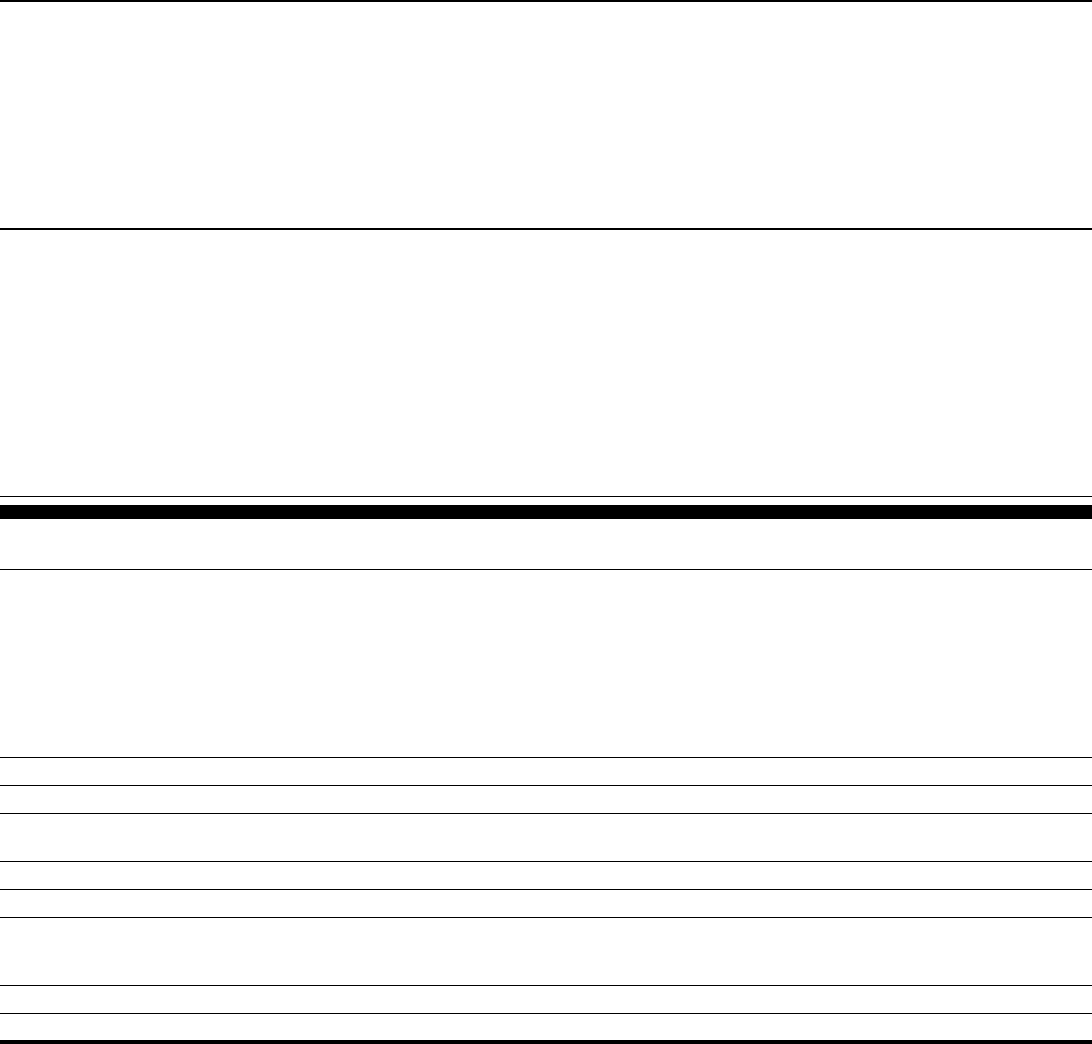
Page 30 GAO-06-273 Internet Access Tax Moratorium
Appendix III
Case Study States’ Taxation of Services
Related to Internet Access
Appendix III
Table 4 and the following summaries show how our case study states
significantly differed from each other in how they taxed services related to
Internet access. State tax officials gave us much of the following
information in conversations and written communications, and it
represents their opinions of the application of the Internet Tax Freedom
Act and the 2004 amendments to their own unique state laws. That said,
the officials’ comments are not necessarily binding and reflect their
interpretation of state law.
Table 4: Characteristics of Case Study States
Source: State officials and laws.
a
For purposes of this report, a reference to a sales tax includes any ancillary use tax. Also, for our
purposes, the difference between a sales and a gross receipts tax is largely a distinction without a
difference since the moratorium does not differentiate between them.
b
See earlier text for a discussion of the limitations of the state estimates of revenue from taxes.
c
Rhode Island retail consumers did not pay this tax directly, but rather through the gross receipts tax
paid by their providers.
d
According to Rhode Island officials, Rhode Island did not have an estimate for taxes collected on
acquired services.
e
Texas officials did not provide us with an estimate of taxes collected for Texas localities.
State
Taxed retail
consumer
dial-up
Internet
access
services
Taxed retail
consumer
cable-
modem
Internet
access
services
Taxed retail
consumer
DSL Internet
access
services
Taxed
acquired
services
Type of
tax
a
State tax rate
(percentage)
Local
tax rate
(percentage)
Roughly
estimated
2004 state
and local tax
collections
for all these
services
(dollars in
millions)
b
California N/A N/A N/A N/A
Kansas x Sales 5.3 1.3 on average $9-10
Mississippi x Gross
income
7.0 N/A At most, 1.0
North Dakota x x x Sales 5.0 1.0-2.0 2.4
Ohio x x x x Sales 5.5 1.0 on average 52.1
Rhode Island x
c
x
c
x Gross
receipts
and sales
5.0,
6.0
N/A Less than 4.5
d
Texas x x x Sales 6.25 2.0 limit 50
e
Virginia N/A N/A N/A N/A

Appendix III
Case Study States’ Taxation of Services
Related to Internet Access
Page 31 GAO-06-273 Internet Access Tax Moratorium
California
According to a state official, California had no grandfathered taxes on
Internet access under any provision of the 2004 amendments. In addition,
she said that California had enacted its own Internet Tax Freedom Act that
generally prohibited imposing taxes on access starting January 1, 1999.
Under this act, local governments were prohibited, with specified
exceptions, from imposing any taxes on buying or using Internet access or
other online computer services. Expiring January 1, 2004, the law did,
however, expressly permit imposing sales and use taxes, utility user taxes,
and other taxes of general application on goods and services that included
access services. At the time of our contact in mid-2005, California officials
were not aware of any state law either authorizing or preventing the
taxation of access.
Kansas
According to a state Department of Revenue official, Kansas taxes on
acquired services were grandfathered under the 2004 amendments. The
state imposed a general sales tax of 5.3 percent (with, according to the
official, local governments adding an average of another 1.3 percent) that
applied to telecommunications services bought by an ISP and used to
provide Internet access. ISPs paid sales tax on these acquired services to
other providers that then remitted the funds to the state. According to the
official, the state annually collected an estimated $9 million to $10 million
in revenue from this tax, including about $2 million of local tax revenues.
The $9 million to $10 million was an unverified estimate based on
conversations between the Department of Revenue and
telecommunications providers about the providers’ volume of sales to ISPs.
It was derived by taking 10 percent of the $98 million total
telecommunications sales tax receipts that the state collected in 2004. The
approximately $8 million of state revenue was about 0.15 percent of
Kansas’s total tax receipts of about $5.3 billion in 2004. According to the
official, he expected Kansas to lose this yearly revenue starting on
November 1, 2005.
Mississippi
According to Mississippi State Tax Commission officials, although the state
did not tax access that was purchased by retail consumers, its tax on sales
of telecommunications services to ISPs--services we are categorizing as
acquired services--was grandfathered under the 2004 amendments. Since
before the 1998 Internet Tax Freedom Act, the state collected a gross
income tax on public utilities, including telecommunications providers,
which operated much as a sales tax would. No sale-for-resale exemption

Appendix III
Case Study States’ Taxation of Services
Related to Internet Access
Page 32 GAO-06-273 Internet Access Tax Moratorium
applied to these services, according to the officials, because under
Mississippi law the ISP was not a reseller of the same service; the ISP
changed the service before selling it to the retail consumer. The tax rate
was 7 percent and, although officials told us the amount of resulting
revenue collections was extremely difficult to calculate due to a lack of
data, they believed the total amount to be less than $1 million per year.
This was about 0.02 percent of Mississippi’s 2004 tax revenues of about
$5.1 billion. According to the officials, telecommunications companies
remitted sales tax collected from ISPs to the state on a monthly basis. As
there were no local option sales taxes in Mississippi, the state was the only
Mississippi entity that taxed the telecommunications services.
North Dakota
North Dakota Office of State Tax Commissioner officials maintained that
their state was grandfathered under the 2004 amendments, and as such
continued to tax retail consumer Internet access. The state imposed a
sales tax on communications services, which it applied to Internet access.
The tax rate was 5 percent and, according to the officials, led to state
revenue collections of about $2 million per year, which was about 0.16
percent of North Dakota’s approximately $1.2 billion in 2004 tax revenues.
In addition, local rates of generally 1 percent provided about another
$400,000 in yearly collections for local jurisdictions. Retail consumers
were taxed on intrastate Internet access transactions, whether through
dial-up, cable modem, DSL, or wireless technologies. ISPs collected the
taxes and then transferred them to the state. To determine the amount of
tax revenue collected, state officials said they reviewed each registered ISP
and approximated how much income resulted from providing Internet
access. According to the officials, the state’s determinations were
confirmed by subsequent state audits.
Ohio
According to Ohio Department of Taxation officials, Ohio was
grandfathered to continue taxing business (but not residential) purchases
of Internet access and provider purchases of other services to provide
access. Ohio imposed a 5.5 percent sales tax on business users of
telecommunications and electronic information services, supplemented,
according to the officials, by an average 1 percent tax for local
jurisdictions. The same taxes also applied to acquired services. Ohio also
provided a 25 percent sales tax credit for electronic information service
providers, which meant that ISPs could get a tax credit for the equipment
that they purchased and used primarily to provide Internet access.

Appendix III
Case Study States’ Taxation of Services
Related to Internet Access
Page 33 GAO-06-273 Internet Access Tax Moratorium
Because Ohio taxed Internet access as part of electronic information
services for business users, it was difficult for state officials to determine
exactly how much tax was paid on Internet access. Officials estimated that
in 2004, the state collected $17 million in taxes paid on Internet access
services (including some research services) sold to end users, and an
additional $2.8 million from local taxes on those same services. They
derived these numbers using economic census data and vendors’ tax
returns.
In addition, an Ohio official estimated collecting another $27.3 million in
state taxes and $5 million in local taxes in 2004 from other Internet access-
related services that state officials said Ohio could no longer tax starting in
November 2005. The combined $32.3 million state and local revenues for
services not taxable in November 2005 included several components. The
largest was $20.5 million on telecommunications services and property
provided to ISPs and Internet backbone providers, for example, high-speed
lines leased by an ISP from a telecommunications provider. In arriving at
this estimate, state officials assumed that 10 percent of telephone and
wireless services would become tax exempt. The next largest component
was $9.1 million for private line services, such as T-1 and T-3 lines, and
800/wide-area telecommunications-type services that an official said would
be exempt due to the moratorium. The state derived this number by
assuming that 10 percent of the relevant services were attributable to
Internet customers. These services had become taxable as of July 1, 2003,
when Ohio repealed exemptions for them, but, according to state officials,
these services were becoming tax exempt again at November 1, 2005, under
the changed definition of Internet access.
The amount of Internet access-related state taxes that an Ohio official said
the state collected in 2004 was $44.3 million. This was the sum of the
$17 million from retail services and $27.3 million from acquired services.
This total amounts to about 0.2 percent of Ohio’s approximately $22.5
billion in tax collections for 2004. It does not reflect a problem that Ohio
officials expected from taxpayers bundling services as Internet access
services in order to avoid sales tax. Although the officials said the size of
the problem was unknown, they assigned a $24 million sales tax loss to it
for 2007, assuming it to be similar in size to other annual tax losses that
would start in November 2005.
Rhode Island
State officials told us that Rhode Island was grandfathered under the 2004
amendments to tax Internet access through both a gross receipts tax on

Appendix III
Case Study States’ Taxation of Services
Related to Internet Access
Page 34 GAO-06-273 Internet Access Tax Moratorium
ISPs and a sales tax on telecommunications services acquired by ISPs. The
gross receipts tax, in existence since 1942, was imposed on any company
charging a telecommunications access fee, with provisions to prevent the
same charges from being taxed twice. This tax was assessed at a rate of 5
percent, and companies submitted an annual return to the state and made
estimated payments throughout the year. According to state officials,
Rhode Island did not tax companies providing Internet access services via
cable modem but did tax those providing access services through dial-up,
DSL, or wireless technologies. Not knowing what part of reporting
companies’ gross receipts came from providing Internet access, the
officials could not determine precisely how much revenue the state
collected from Internet access under the gross receipts tax. They did say
that since Internet access charges probably totaled less than 10 percent of
annual telecommunications gross receipts of $40 million to $45 million, the
amount of state revenue collected from taxing Internet access would be
less than $4.5 million. This would be about 0.19 percent of 2004 state tax
revenues that totaled about $2.4 billion.
The officials also said that Rhode Island would be affected by the new
definition of Internet access under the 2004 amendments as it applies to the
state sales tax, and thus to the taxation of acquired services. The sales tax
was imposed at a 6 percent rate on the purchase of telecommunications
services bought by ISPs to provide Internet access. The sale/resale
exemption did not apply because ISPs are considered to be the “end users”
of the services, as their own products differ from the ones purchased. The
officials did not think revenues from taxing acquired services were
significant compared to overall state telecommunications tax revenues.
Texas
An official with the Texas Comptroller of Public Accounts maintained that
his state had been permitted to tax retail consumer Internet access for
years, making Texas another one of the relatively few states that continued
to be grandfathered under the 2004 amendments. Because Texas had no
state income tax, a sales tax was its primary source of revenue. In 1985,
telecommunications were added to the services covered by the sales tax,
and in 1988, information services were added as well. According to the
official, the 6.25 percent sales tax rate led to state revenue collections of
about $50 million for 2004, which was about 0.16 percent of Texas’s
approximately $30.8 billion in tax revenues for 2004. Local jurisdictions
typically imposed an extra one-quarter to 1 percent additional sales tax on
Internet access, but the combined total of state and local taxes could not
exceed 8.25 percent. Texas exempted from taxation the first $25 of

Appendix III
Case Study States’ Taxation of Services
Related to Internet Access
Page 35 GAO-06-273 Internet Access Tax Moratorium
Internet access charges incurred by a customer when buying Internet
access from an ISP. However, according to the official, a corporate
customer qualified for one $25 exemption regardless of how many
accounts it maintained. The sale-for-resale exemption applied in Texas to
services sold by a provider to an ISP for resale purposes, so those acquired
services were not taxable. Retail consumers were taxed on intrastate
Internet access transactions, whether through dial-up, cable modem, DSL,
wireless, or satellite technologies. ISPs collected the taxes and then
transferred them to the state.
Virginia
According to Virginia Department of Taxation officials, Virginia had no
taxes on Internet access grandfathered under the 2004 amendments. In
Virginia, ISPs were subject to taxes of general application, like corporate
income and gross receipts taxes imposed by the state or local jurisdictions,
but Internet access transactions were not taxable transactions. According
to the officials, Virginia’s sales tax statutes exempted ISPs from collecting
sales tax, codifying then current state practices. Virginia had exempted
Internet access services from its sales and use tax in April 1998. Acquired
services were similarly not taxable in Virginia.
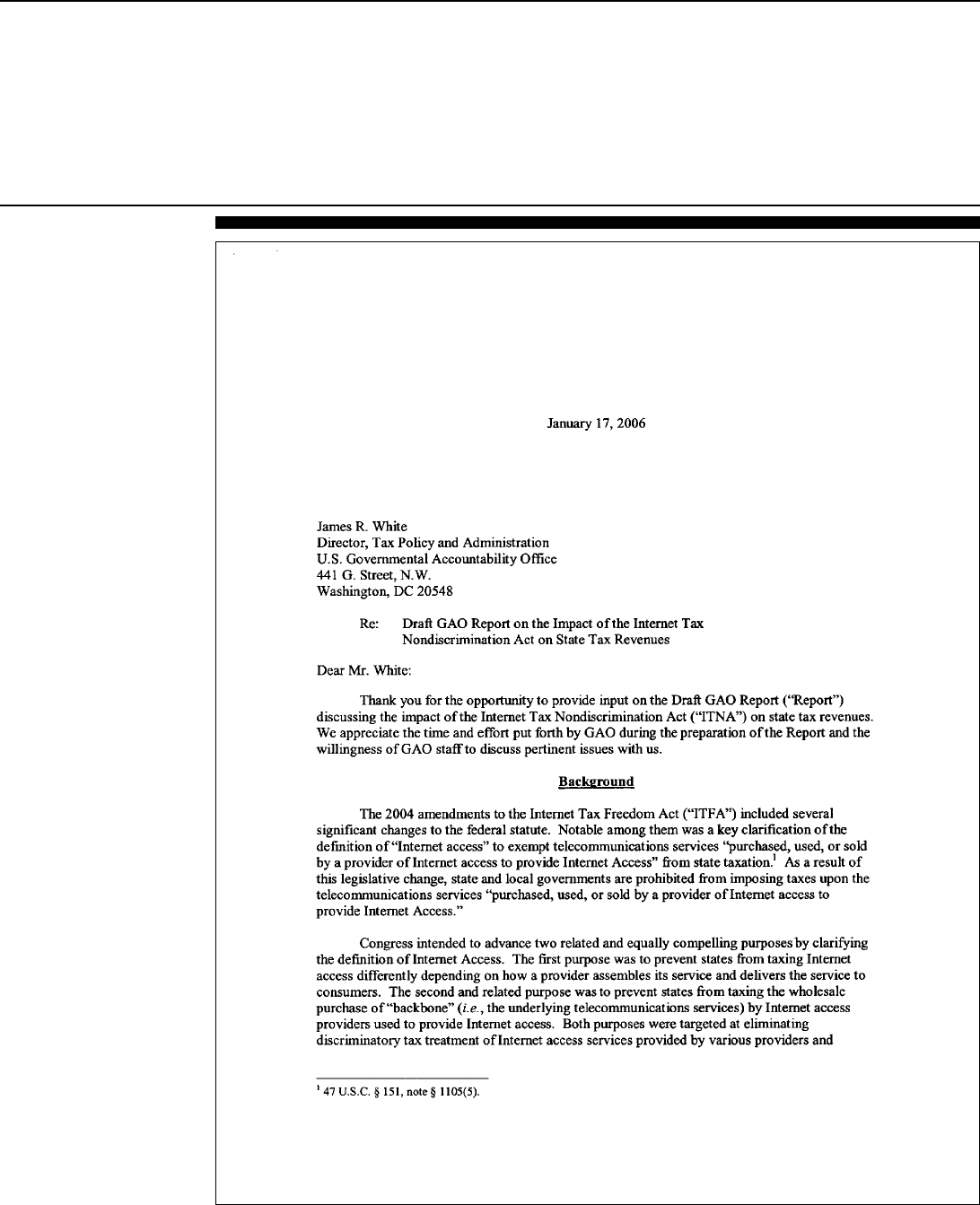
Page 36 GAO-06-273 Internet Access Tax Moratorium
Appendix IV
Comments from Telecommunications
Industry Officials
Appendix IV
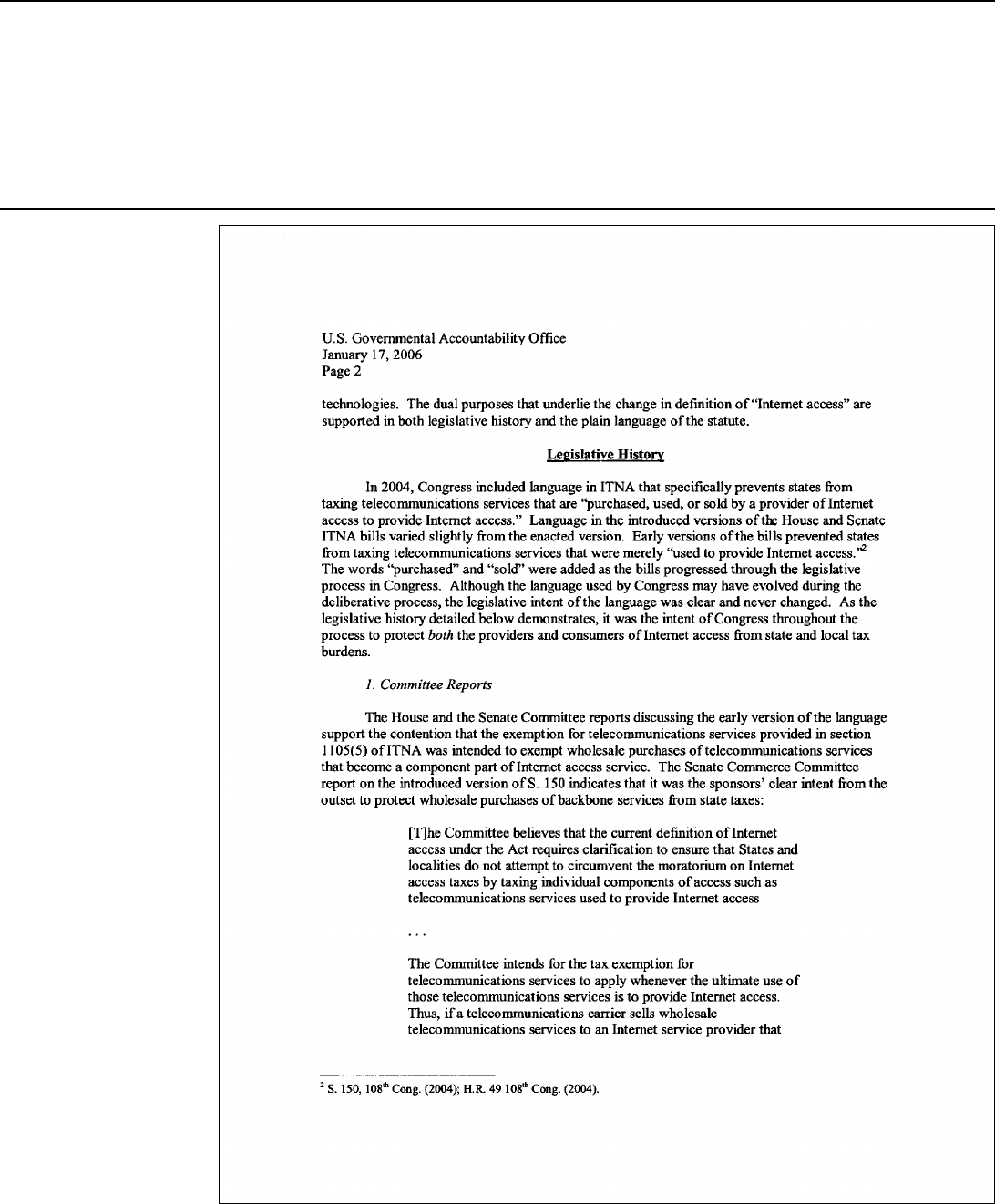
Appendix IV
Comments from Telecommunications
Industry Officials
Page 37 GAO-06-273 Internet Access Tax Moratorium
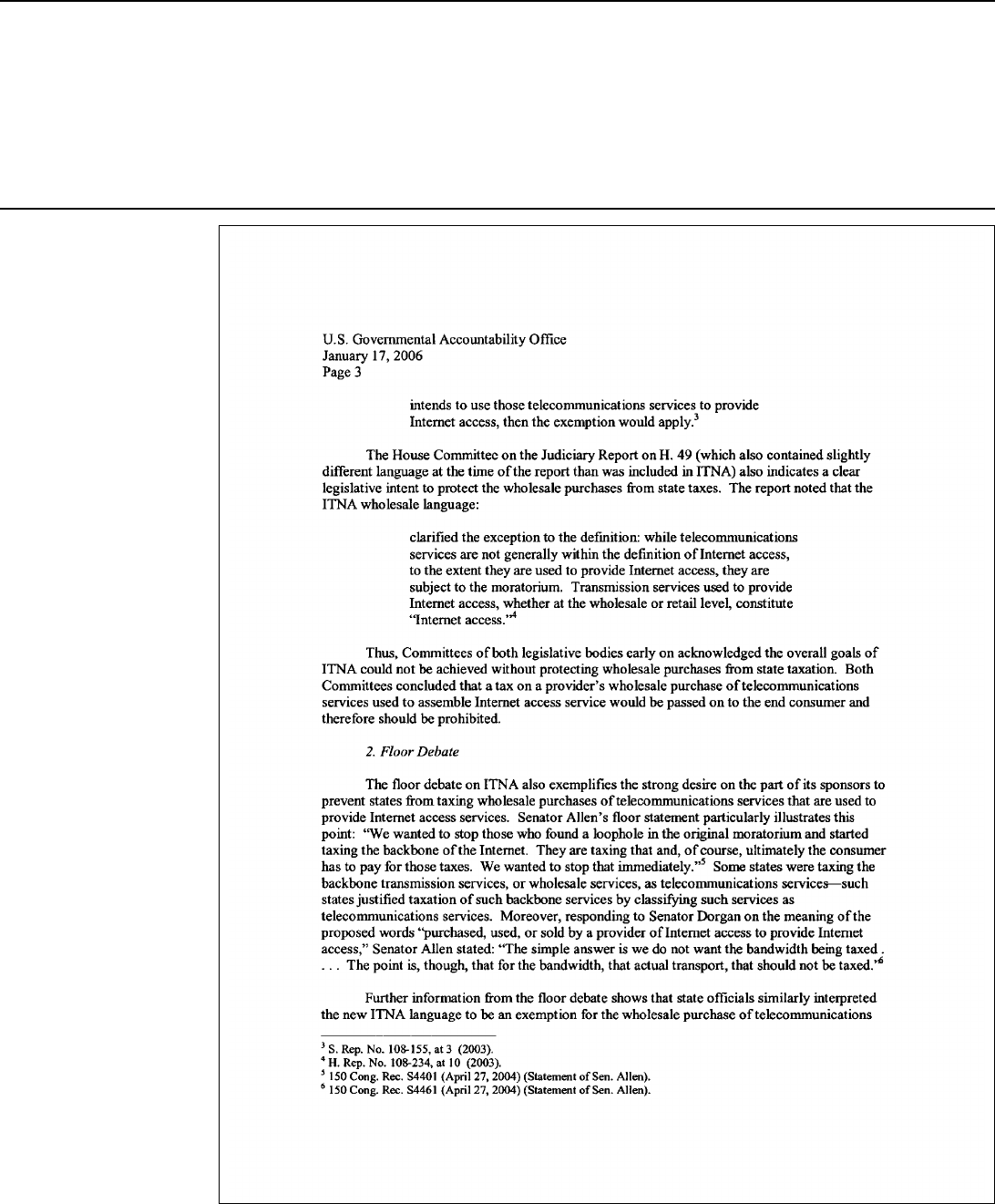
Appendix IV
Comments from Telecommunications
Industry Officials
Page 38 GAO-06-273 Internet Access Tax Moratorium

Appendix IV
Comments from Telecommunications
Industry Officials
Page 39 GAO-06-273 Internet Access Tax Moratorium
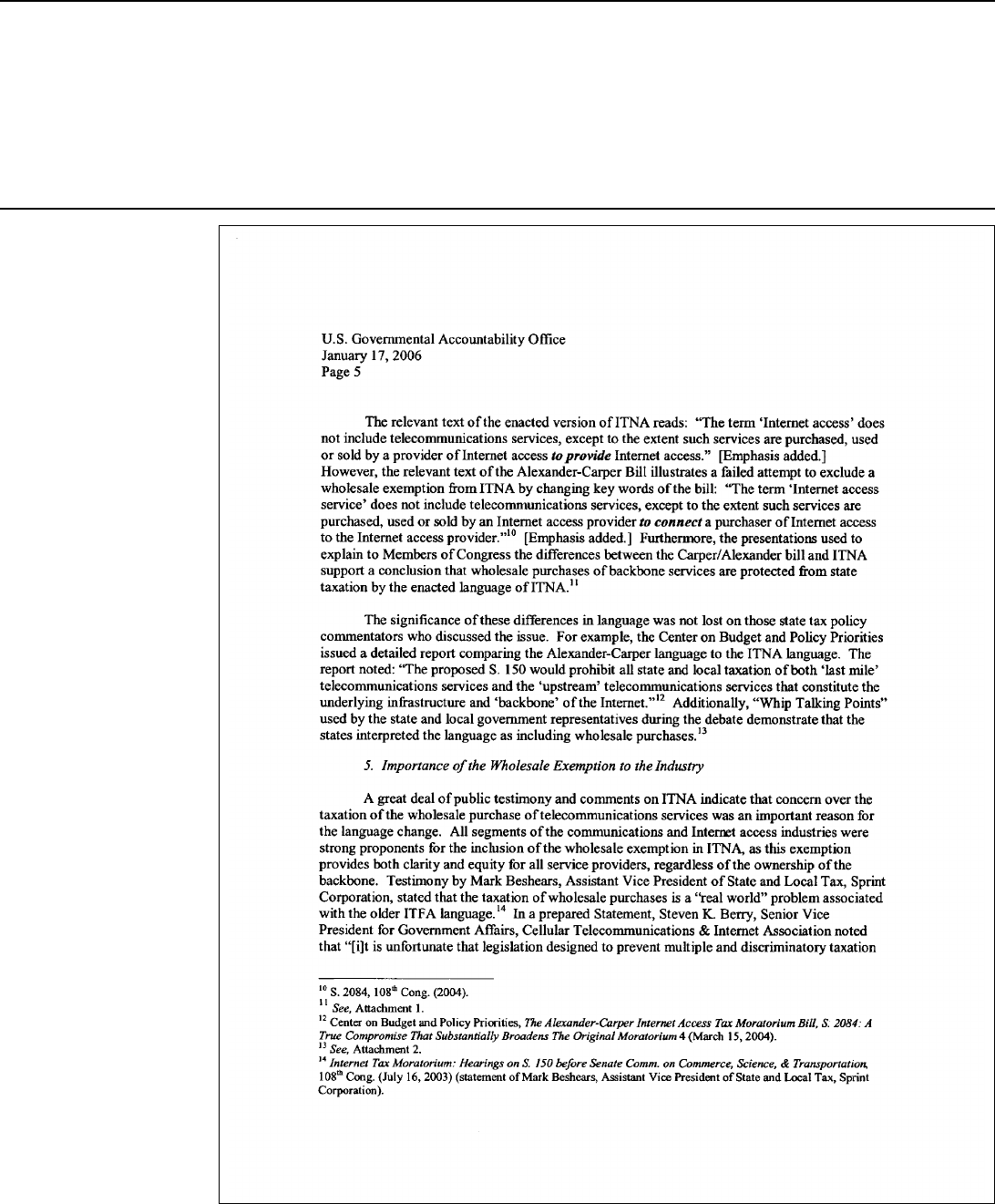
Appendix IV
Comments from Telecommunications
Industry Officials
Page 40 GAO-06-273 Internet Access Tax Moratorium
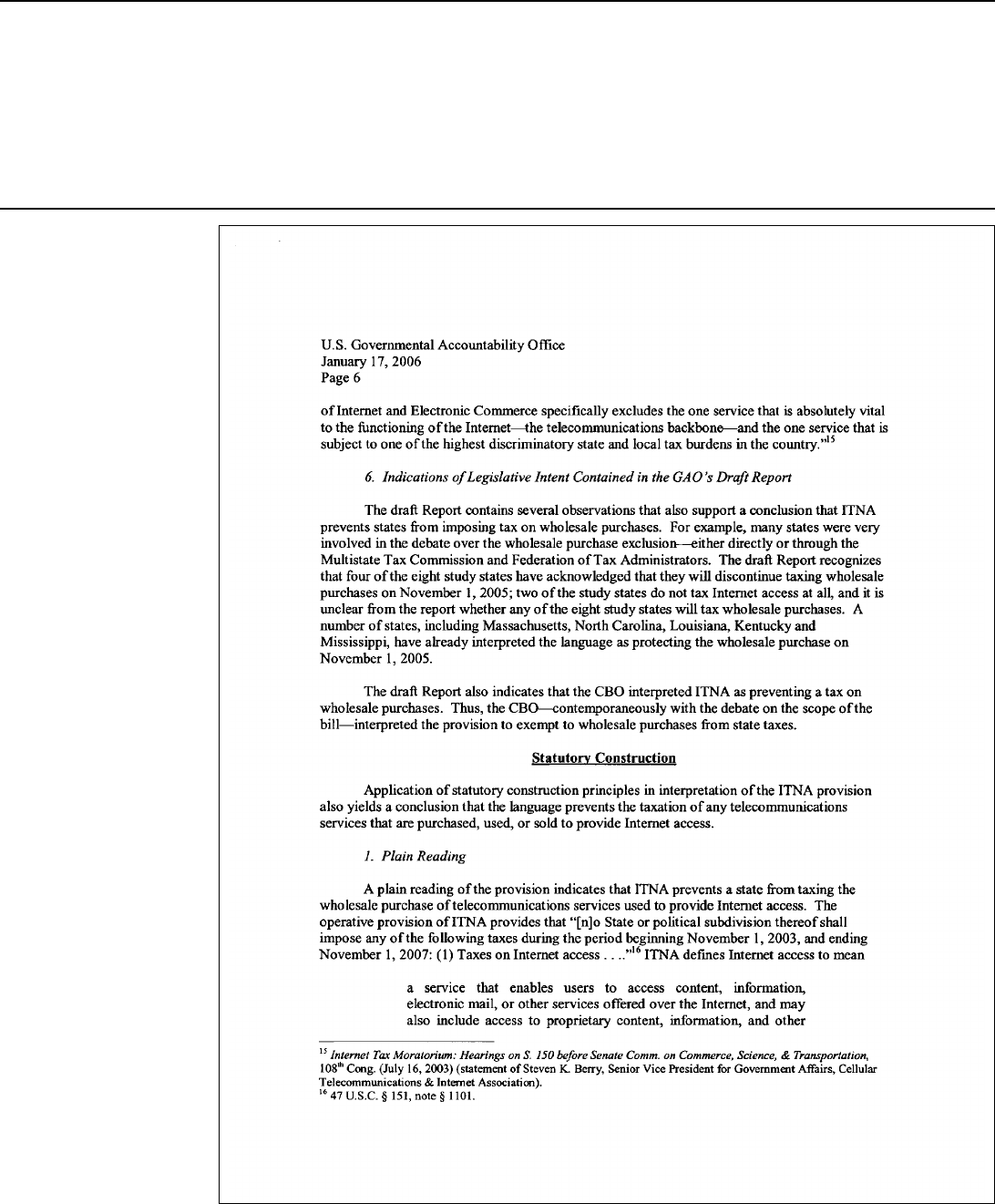
Appendix IV
Comments from Telecommunications
Industry Officials
Page 41 GAO-06-273 Internet Access Tax Moratorium
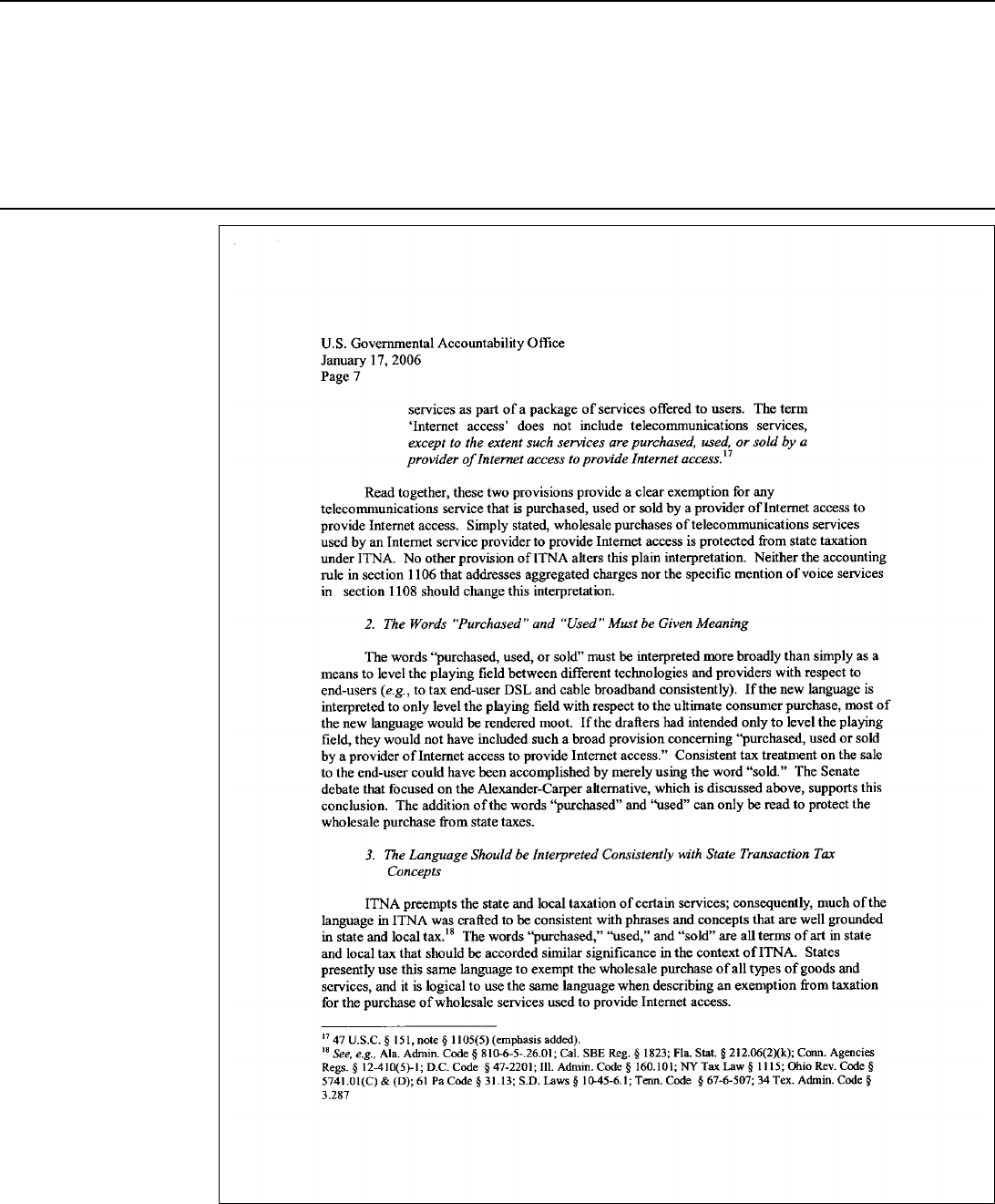
Appendix IV
Comments from Telecommunications
Industry Officials
Page 42 GAO-06-273 Internet Access Tax Moratorium

Appendix IV
Comments from Telecommunications
Industry Officials
Page 43 GAO-06-273 Internet Access Tax Moratorium
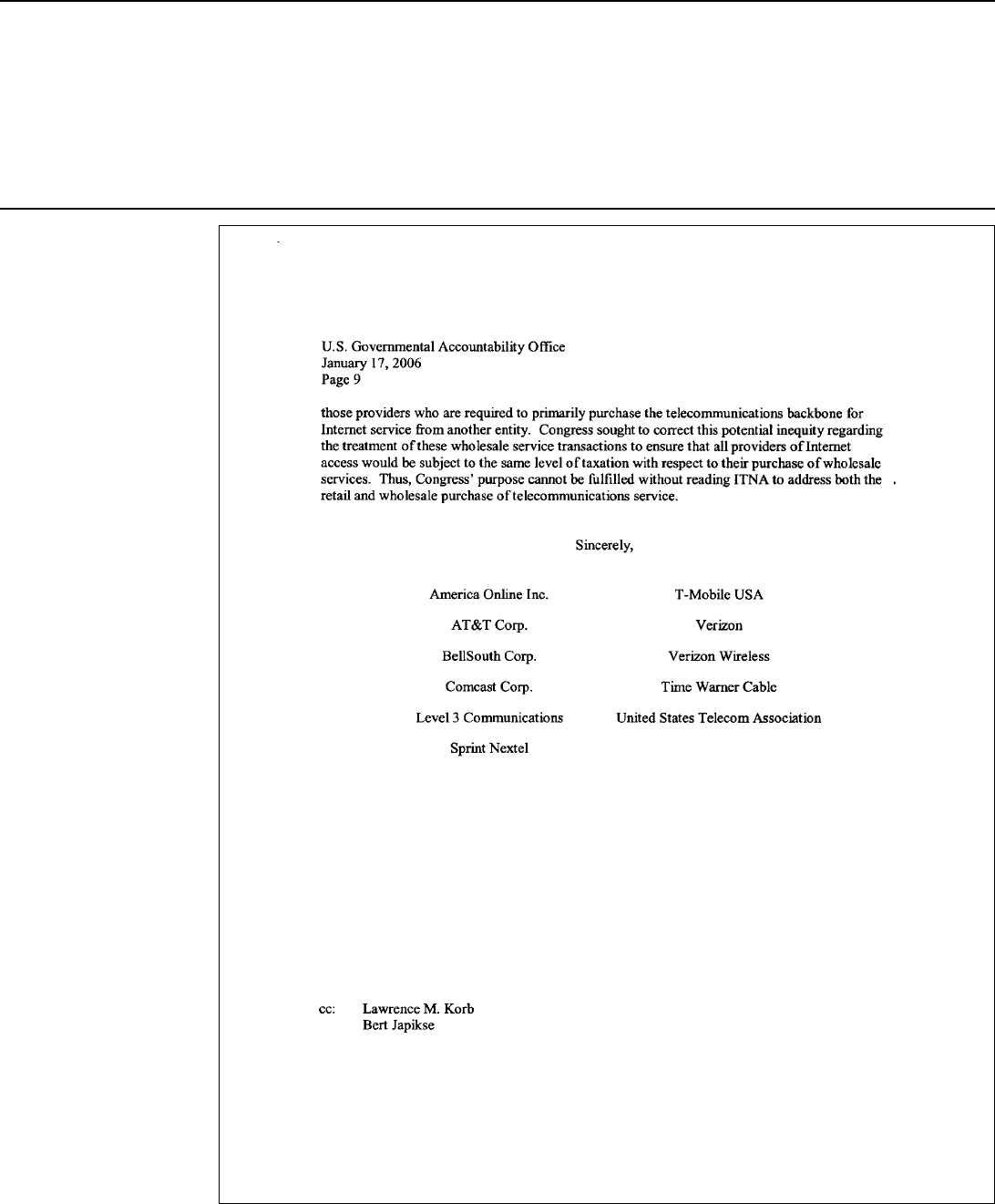
Appendix IV
Comments from Telecommunications
Industry Officials
Page 44 GAO-06-273 Internet Access Tax Moratorium
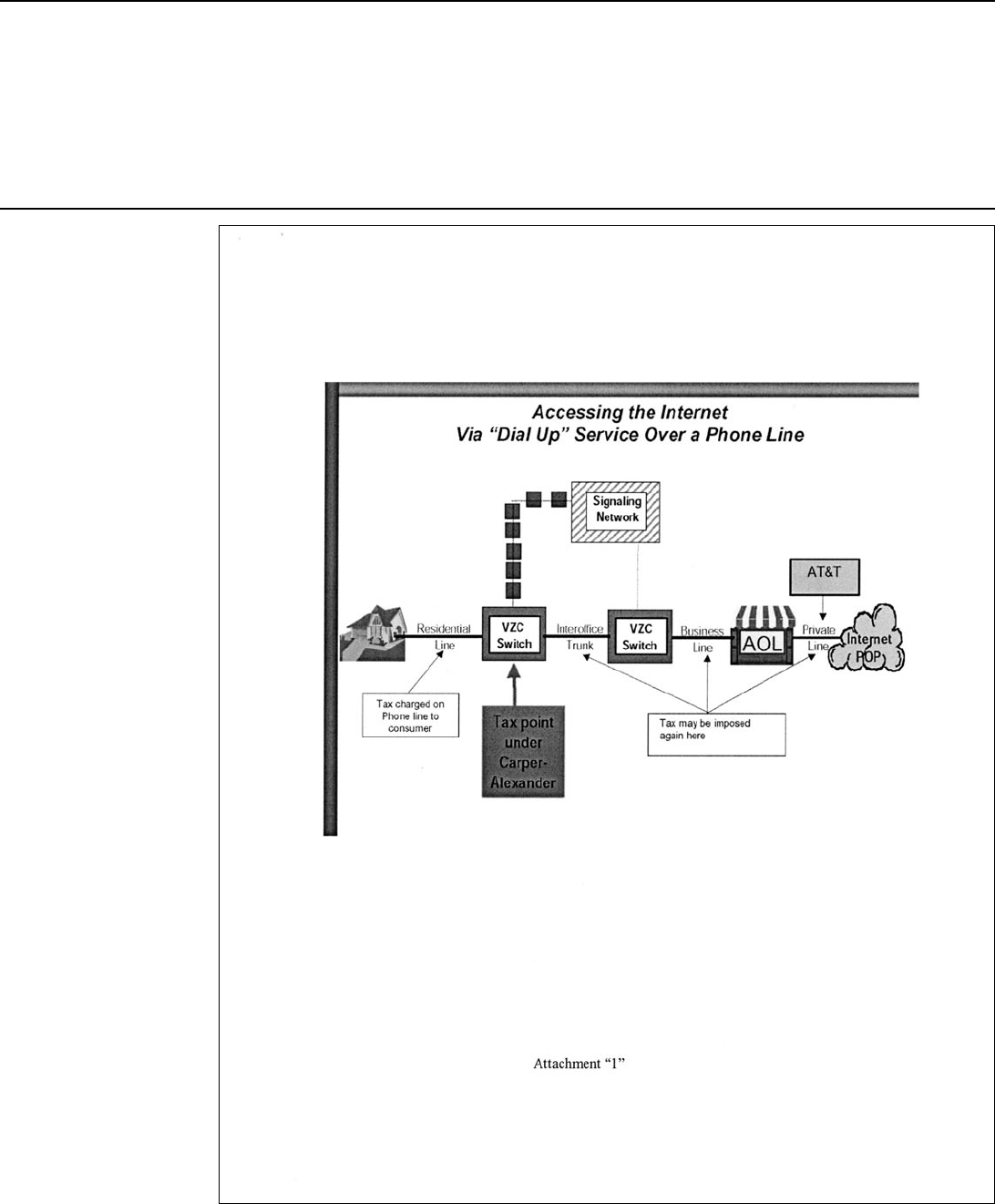
Appendix IV
Comments from Telecommunications
Industry Officials
Page 45 GAO-06-273 Internet Access Tax Moratorium
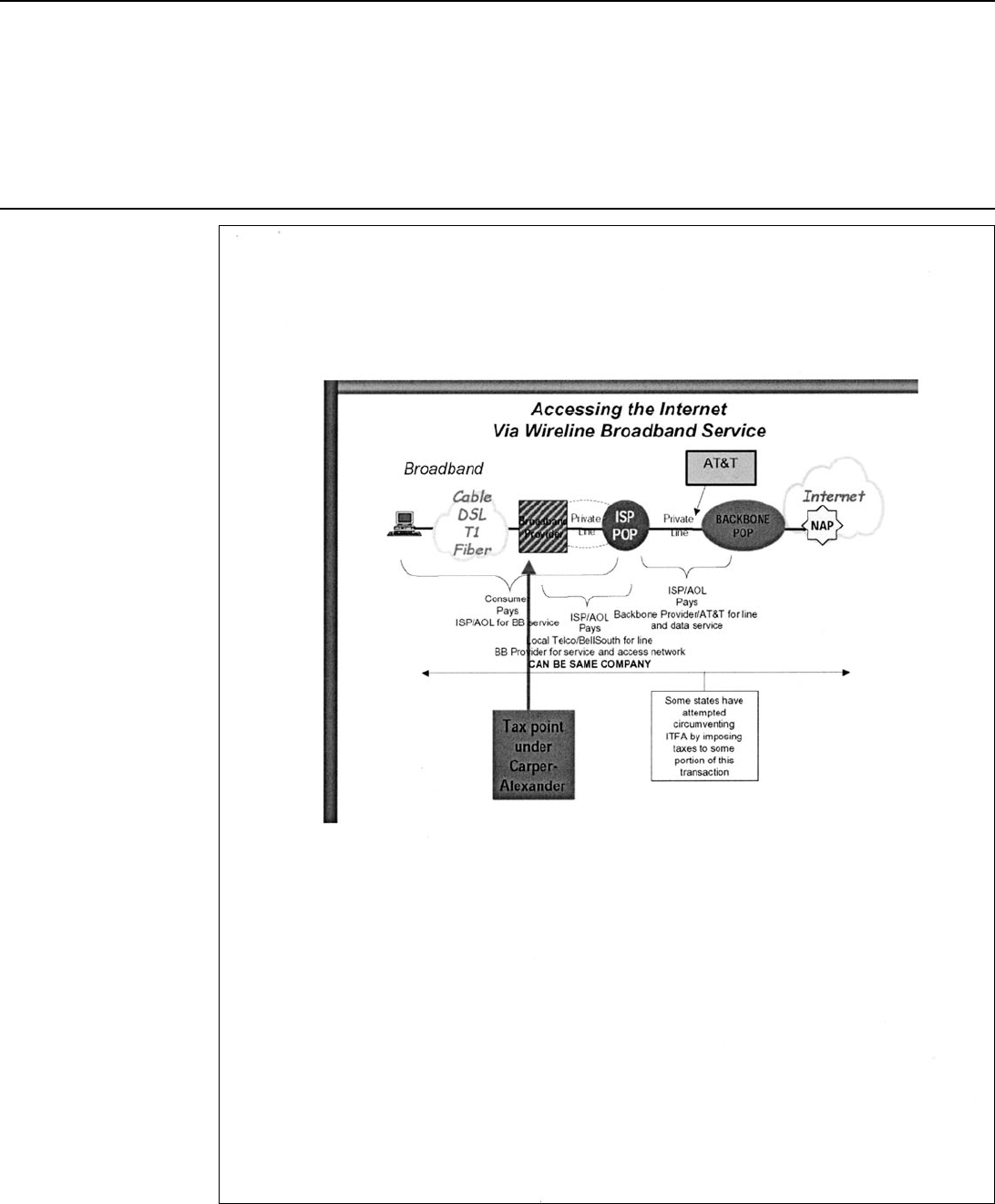
Appendix IV
Comments from Telecommunications
Industry Officials
Page 46 GAO-06-273 Internet Access Tax Moratorium
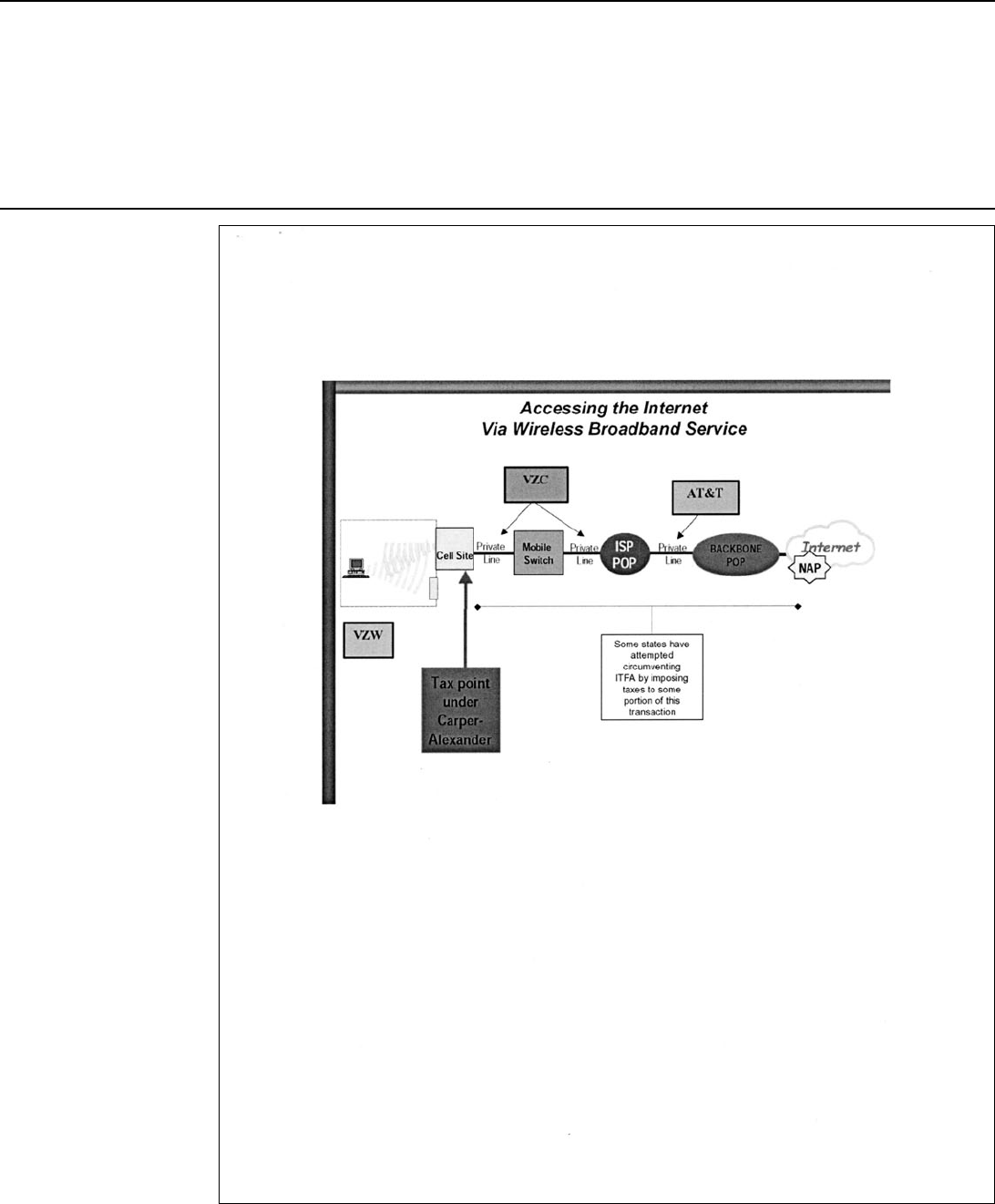
Appendix IV
Comments from Telecommunications
Industry Officials
Page 47 GAO-06-273 Internet Access Tax Moratorium
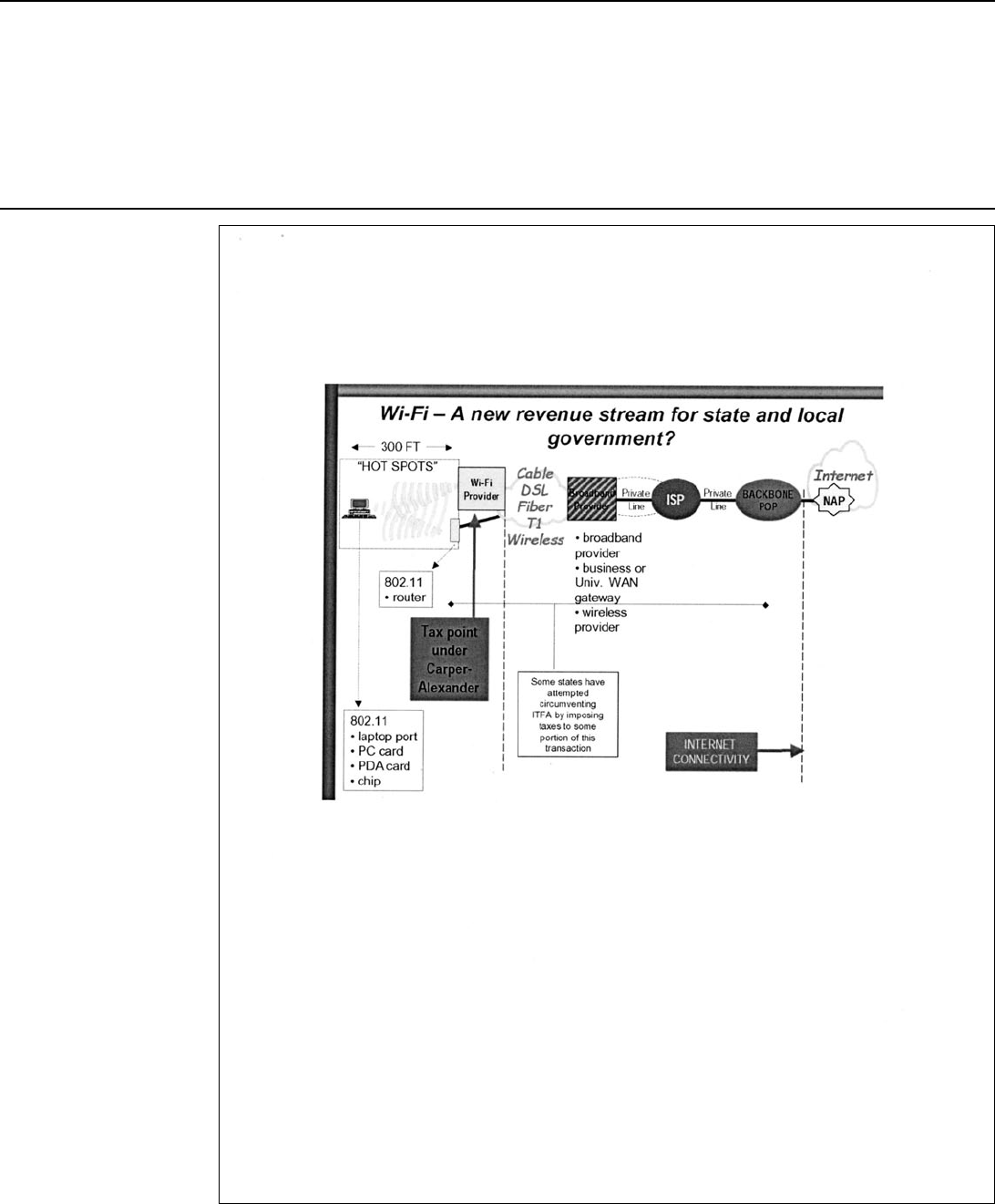
Appendix IV
Comments from Telecommunications
Industry Officials
Page 48 GAO-06-273 Internet Access Tax Moratorium
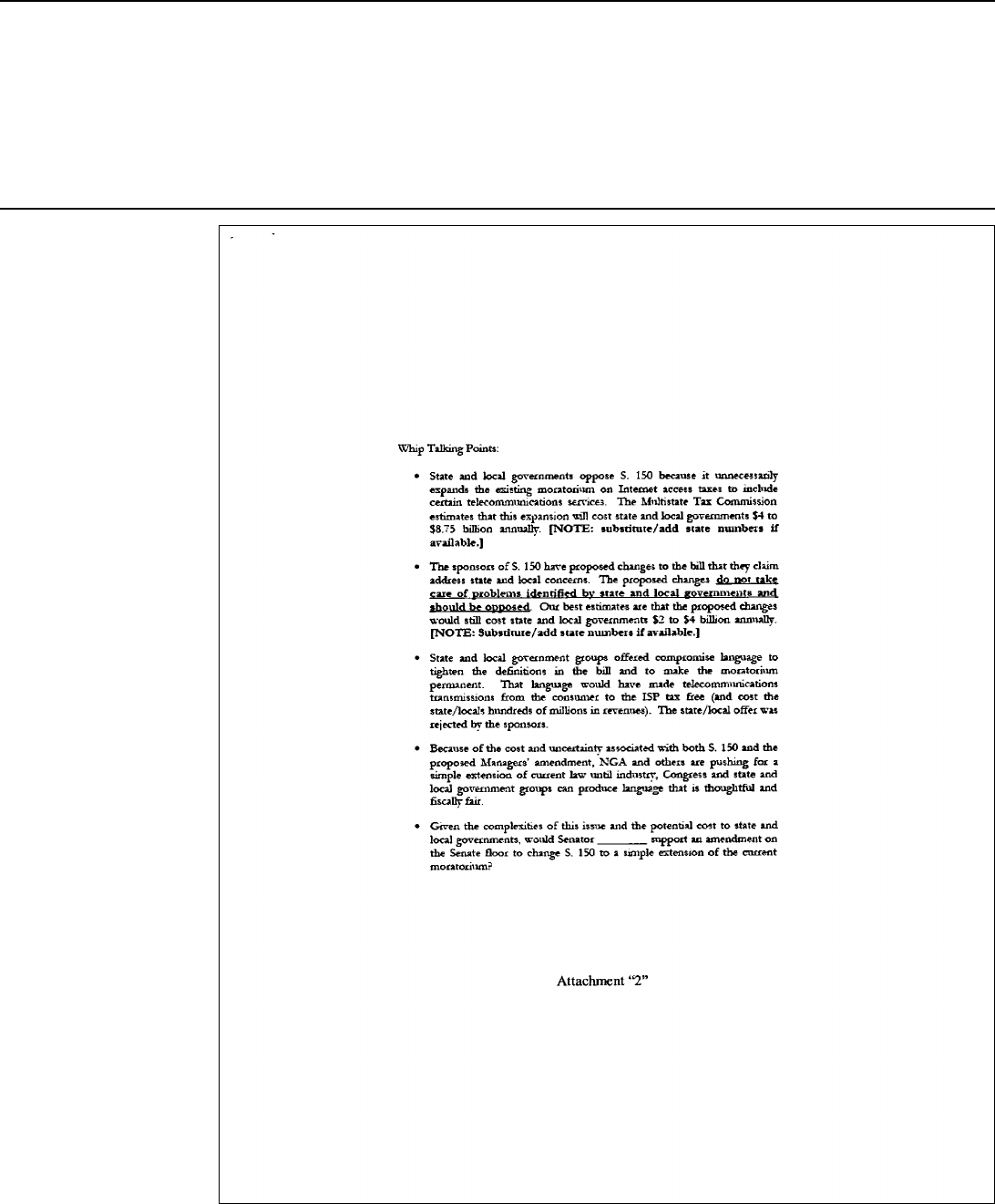
Appendix IV
Comments from Telecommunications
Industry Officials
Page 49 GAO-06-273 Internet Access Tax Moratorium

Page 50 GAO-06-273 Internet Access Tax Moratorium
Appendix V
GAO Contact and Staff Acknowledgments Appendix V
GAO Contact
James R. White (202) 512-9110
Acknowledgments
In addition to the contact named above, Michael Springer, Assistant
Director; Bert Japikse; Shirley A. Jones; Lawrence M. Korb; Walter K.
Vance; and Bethany C. Widick made key contributions to this report.
(450433)

GAO’s Mission
The Government Accountability Office, the audit, evaluation and
investigative arm of Congress, exists to support Congress in meeting its
constitutional responsibilities and to help improve the performance and
accountability of the federal government for the American people. GAO
examines the use of public funds; evaluates federal programs and policies;
and provides analyses, recommendations, and other assistance to help
Congress make informed oversight, policy, and funding decisions. GAO’s
commitment to good government is reflected in its core values of
accountability, integrity, and reliability.
Obtaining Copies of
GAO Reports and
Testimony
The fastest and easiest way to obtain copies of GAO documents at no cost
is through GAO’s Web site (www.gao.gov). Each weekday, GAO posts
newly released reports, testimony, and correspondence on its Web site. To
have GAO e-mail you a list of newly posted products every afternoon, go to
www.gao.gov and select “Subscribe to Updates.”
Order by Mail or Phone
The first copy of each printed report is free. Additional copies are $2 each.
A check or money order should be made out to the Superintendent of
Documents. GAO also accepts VISA and Mastercard. Orders for 100 or
more copies mailed to a single address are discounted 25 percent. Orders
should be sent to:
U.S. Government Accountability Office
441 G Street NW, Room LM
Washington, D.C. 20548
To order by Phone: Voice: (202) 512-6000
TDD: (202) 512-2537
Fax: (202) 512-6061
To Report Fraud,
Waste, and Abuse in
Federal Programs
Contact:
Web site: www.gao.gov/fraudnet/fraudnet.htm
E-mail: [email protected]
Automated answering system: (800) 424-5454 or (202) 512-7470
Congressional
Relations
Gloria Jarmon, Managing Director, [email protected] (202) 512-4400
U.S. Government Accountability Office, 441 G Street NW, Room 7125
Washington, D.C. 20548
Public Affairs
Paul Anderson, Managing Director, [email protected] (202) 512-4800
U.S. Government Accountability Office, 441 G Street NW, Room 7149
Washington, D.C. 20548
